





Something big is coming to Western Sydney. Start here. Start now.











Something big is coming to Western Sydney. Start here. Start now.









Highline is at the heart of the $1 billion expansion plans for local universities, upcoming $900 million hospital redevelopment and at the start of the new light rail. 1, 2 and 3 bedroom apartments coming soon. Get to the front of the pack and stay in the lead.





There seems to be a prevailing mood among Indian-Australians that any bias, perceived or otherwise, against India or things Indian, will be met with a sharp rebuke and in certain cases, a call to action. This trend, which seems to have emerged over the recent past, has emboldened the community to take a more decisive stand on various issues. What, however, needs to be sifted through, is to be clear about which battles need to be fought, rather than to take affront on each and every issue.
This year alone, we’ve had a few instances which had the community up in arms. One was a Bollywood event at which the organiser included in his guest list an unhealthy mix of entertainers who had, in public, incited violence and terrorism against India over the unrest in Kashmir. Media pressure from India and strong opposition from the local Indian Australian community forced the organiser to call off the event with but a
few days’ notice.


The second and perhaps more extreme issue was the blatant disregard by the government-funded SBS on the sensitive issue of the geographical map of India. Its depiction of the entire state of Jammu and Kashmir as disputed territory did not go down well with the Indian community. What was surprising was that in spite of representations from the community, the Indian diplomatic corps in Canberra and even a letter of protest from Labor Member of Parliament Michelle Rowland, SBS dragged its heels over clearing up the issue. It was, seemingly, with much reluctance, that it finally corrected the online version of the map. As one writer to Indian Link pointed out, “It is funny that SBS doesn’t show Tibet as being disputed or occupied.”
This was not the only time SBS got it wrong where the Indian community was concerned. Its earlier reports about PV Sindhu and AAP both turned out to be inaccurate and resulted in SBS having to apologise.
A juggernaut like SBS with an annual budget of over $280 million needs to be more aware of its responsibilities towards the multicultural communities it claims to serve, and a more robust internal compliance system.


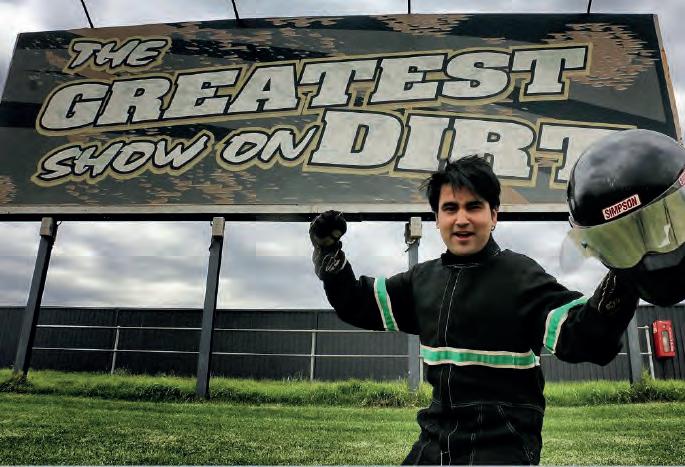
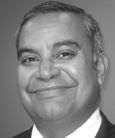
Also on a regular basis, complaints come up about the inappropriate use of our gods and goddesses in commercials. Hinduism’s most-loved god Ganesha seems to be a favourite of advertising companies.
In his most recent appearance - in a Meat & Livestock Australia’s video adGanesha sits at a communal meal in which lamb is served. The idea had the local Hindu community up in arms, issuing a call to the Australia Advertising Standards ureau to an the o ending film.
Earlier this year, the company Raven Fightwear was urged to withdraw its rashvest which displayed images of a “Battle of the Gods - Hanoman v Ganesha.” Flow Yoga Wear were also forced to withdraw from sale their leggings depicting Lord Ganesha’s form. While these issues are important and a balance needs to be kept between sensibilities and shock value, perhaps we also need to see similar passion on other issues which affect the community more directly. The community moral muscle needs to e fle ed against domestic iolence, seniors’ financial a use and other social justice issues. By being strong internally as a community, we can harness our strengths to effect citizen action against those who cause affront to us as a whole.






























Thinking of starting a




















career in child care or you just want to advance yourself in the industry? Do you want more pathways into other careers. Then studying at AICT and completing one of our courses can do just that. We specialise in Child Care.








The community reacted to the Meat and Livestock Australia ad that has caused a lot of controversy
Janaki Rathod wrote: Yes it is offensive and unecessary. Most of the Indians are vegetarian and eating meat is any way not a good idea for many spiritual people. The important fact is you are killing an animal, so how can it be good? Shame on these ad makers and people who even considered it funny.
Ruchika Bhasin wrote: I do like the fact that all religions are sitting together and having a meal. What I don’t like is the fact that they completely ignored the sentiment of both Hindus and Muslims. At the end, they speci cally mention lamb that everyone can enjoy, which con rms that they are ignorant / purposely want to ignore religious beliefs of people. Just shows how the socalled creative minds of ignorant people work.
Mayank Ashri wrote: Dear @MeatAndLiveStockAustralia




The recently released ad depicting Hindu God eating meat is highly inappropriate and almost offensive towards people’s sentiments
Payal Gupta wrote: We should not make it an issue to outrage the religious sentiments of people. But yes, it needs to be resented. Any personal attack on any community or culture, above all any religion is objectionable. We have various other ways of publicity. Why adopt a way which can hurt and agitate the concerned masses?
Rajni Luthra wrote: I thought the ad was quite clever: it showed that we must all come together irrespective of our religious differences. Many vegetarians sit at tables where meat is being served without raising a ruckus. I wonder if Ganesh himself would have minded – whether he partook or not. Might be important to remind ourselves of what Ganesh’s pot belly really represents: it is a symbol of the brahmanda, the entire universe and its illusory quality to encompass everything good or bad.
Smriti Yadav-Vig wrote: The current world we live in is too sensitive, be it Hindus or other community groups. I’m a Hindu and no I’m not ‘offended’.
Roopak Kumar wrote: This is absolutely disgusting. It’s ok to have bit of fun but it’s not acceptable to play with people faith and on top misleading facts.
Chandra Kishore wrote: It is insulting. There is a petition going on… we should sign it.



Pranav Aggarwal wrote: Totally condemn and would sign the petition.
Jyoti Kapoor wrote: Shameful! No one is standing properly
Our story on organ donors and recipients struck a chord with many Life Giving Stories wrote: Thanks Farzana Ahmad from Indian Link for your coverage of Life Giving Stories 2017. One of the best lines came from Milli Udani: “If receiving an organ is not forbidden in any religion, then why would it be not permitted to donate one.
Rajni Luthra wrote: Alan, so good to hear you speak so candidly. You sound like a really cool dad, a great guy, and a wonderful family man. I’m sure you’ve convinced many, in your quiet, sage way, to vote Yes! Hope to keep hearing from you on the issue.

Indian Link hosted former diplomat, writer and politician Dr Shashi Tharoor for a private dinner with a select gathering. They couldn’t stop gushing about the dynamic guest


Shashi Tharoor tweeted: My third event of the day in Sydney. Enjoyable dialogue
Monika Barthwal Datta tweeted: Great evening listening 2& engaging with the brilliant @ShashiTharoor over dinner hosted by @indian_link
Yadu Singh tweeted: At an interesting, informative and enlightening evening with @ShashiTharoor, organized by @indian_link at Manjit’s, The Wharf, Sydney.
Charu Menon tweeted: Fan girl moment!! Thank you @ShashiTharoor for a riveting evening. Eloquent as ever. Come back to Sydney soon. #sydney #IndianLInk #sigh
Fida Saxena tweeted: Dear sir you are one of the most eloquent speakers in present times
Indian-Australians expressed anger over depiction of the entire Jammu and Kashmir state as disputed territory Karthi Keyan wrote: It is funny that SBS doesn’t show Tibet as being disputed or occupied.

Our Facebook post on the Bollywood-inspired celebrations of India’s 70th Independence Day was well-liked Kerren Lumsden wrote: Would love to be able to dance like this....
An Indian Link advertiser SARAH GILLIS dug out an old copy of the newspaper and refreshed some memories
“Live and Work in Australia with Sarah’s help!” This advertising supplement from Indian Link newspaper way back in 2000 celebrated me opening the doors to my own business!


And my doors are still open today. Come and have a chat.
#ThrowbackThursday #Throwback #25Years #SilverYear #tbt
This is the man the British want us to hail as an apostle of freedom and democracy, when he has as much blood on his hands as some of the worst genocidal dictators of the 20th century Shashi Tharoor on Winston Churchill ABC TV’s Q&A
The excuse that apologists (of British empire) like to make is, it’s not our fault, you just missed the bus for the industrial revolution. Well, we missed the bus because you threw us under its wheels Shashi Tharoor on ABC TV’s Q&A
Raj Gondaliya was at the right place at the right time when he and his wife met Aishwarya Rai Bachchan. Raj shares his experience

We all know Aishwarya as an actress, but I can add that she is a humble and warm person as well. As she was about to go for an interview with Rajeev Masand, my wife and I asked her for a photo with her and I can’t believe how considerate she was. She didn’t want us to wait till her interview nished so she asked us to come forward to pose for a photo before it. We had an opportunity to have a quick chat with her, and it was a pleasure talking to her. She’s been in the industry for long but is still grounded. It was also good to see Aaradhya with her during ag hoisting ceremony. She is a hands-on mother, balancing her work life and personal life well. I think it’s inspiring how she has maintained a digni ed status as a daughter, daughter-in-law, wife, mother and above all - a woman.
The lm ‘Lipstick Under My Burkha’ gets applause for its frank portrayal of female sexuality

Aparna Ananthuni wrote: “Let’s at least have sex?”




This is one of my favourite moments from Lipstick Under My Burkha, this year’s most ‘controversial’ Indian lm.
Leela, a young beautician who is being forced into an arranged marriage, has snuck over to her moody boyfriend’s house in the middle of the night, where he is sleeping with some young boy relatives. They go into the bathroom to have sex, argue, and the boyfriend, Arshad (played by Vikrant Massey), makes to leave in the middle. That’s when Leela asks her question, panting and unsatis ed.
Arshad’s answer encapsulates, in all its ugliness, just what Indian women face when it comes to expressing sexual desire.
“Is that all you want? Sex?” He spits. He then yells that he’ll bring the two sleeping boys in if that’s what she’s after. In one moment, he’s made her lust, her urge, her natural sex drive, into something perverted, unnatural. Why has Lipstick been called ‘controversial?’
Because it tells us that Indian women want to have sex.
It’s nothing more, and nothing less.
It shouldn’t be revolutionary, and it certainly shouldn’t be revelatory, but that’s exactly what it has become. Indian women want to have sex, and that is too shocking a fact not to stir up a ruckus.
It may have been banned for being too “lady-oriented”, but the fact is, what that really translates to is, “no male gaze”. Forsooth!
Because Lipstick tells us, rightly, that sexual repression and freedom from patriarchy go hand-in-hand. Four women, of an assortment of ages and lifestyles, is each shown playing out her own relationship with sexuality and oppression. The youngest, Rehana (Plabita Borthakur), is a college student who breaks free of the burkha forced on her by her parents, and has her rst brush with love, lust and heartbreak. Leela the beautician (Aahana Kumra) is caught between obedience to her single-parent mother, her fun and sexually satisfying relationship with Arshad, and the nagging sense that she shouldn’t have to choose between having fun and being poor and disrespectable. Shireen (Konkona Sen Sharma) is a secret door-to-door sales superstar, but has to grimly endure nightly rape from her emotionless, lazy pig of a husband. And nally, Usha (Ratna Pathak), called ‘Buaji’ by everyone in town, known as an upright ‘elderly’ widow who runs her family business with a rm hand, begins to have secret and highly pleasurable phone sex with her hot young swimming instructor, with devastating consequences.
I suspect those who nd the lm underwhelming simply don’t understand what the fuss is about. But that’s exactly the point.

A reader, DHAMAYANTHI SIVA, wrote in, saying she was ‘scammed’ by a ticketing website
I wish to alert all fans of AR Rahman who are thinking of buying tickets to his concert about something of a scam that is currently operating. A few days ago, I found a website called Viagogo to book the tickets. I chose the middle row to get a good view of the stage and the website advertised these tickets at $222 each. We paid a total of $1,151. But yesterday, I received the tickets (via email) which had a face value of $132 each. Further, the seats that were allocated were quite far from the stage. So I will have to bring sets of binoculars to see AR Rahman on stage!
I got in touch with Viagogo straight away. Their response was that they will not be providing a refund or exchange. They did offer a re-sale using their website. But there was no mention of method of resale or price. Surely this is not the idea of organising a concert.
Australia is one of my fav holiday destinations. I’m fascinated by its warm and welcoming people, spectacular nature, unique wildlife, world-class food Parineeti Chopra, on being appointed ‘Friend of Australia’

To be an Indian feminist woman, even one living in the diaspora, and to watch Lipstick, is to feel like a breath has been released. One that has been held for a very, very long time.
Women want sex. Good, consensual, pleasurable sex. And they want it because it feels good.
+ JOIN THE
> LOG on to your own Facebook or Twitter account
> TYPE “Indian Link” into the search box at the top of the screen and click on the link that comes up

> CLICK ‘Like’ to join the Indian Link Facebook community or ‘Follow’ @Indian_Link on Twitter


Jugaad: Hindi for clever, low-cost solutions.

Innovation is not only for wealthy economies #ABWI
Austrade’s word of the day a few days ago

Our trade and investment ties with this important partner (India) are becoming stronger each year
Asst Minister Keith Pitt on Aus Biz Week in India























Dr Shashi Tharoor may be an Indian parliamentarian and a former minister, but he is also a globally renowned writer and orator. Known for his astute diplomacy at the UN for nearly three decades, for his insightful views on politics, history and international affairs, and for his scholarly books on these and many other subjects, Tharoor is a much sought-after personality wherever he goes.
Which is why, it was a very special evening when Indian Link hosted Dr Tharoor for a private dinner with a select gathering of guests from Sydney’s business, social and journalistic circles on 3 September. Dr Tharoor was in Australia to participate in the Melbourne Writers’ Festival and some events in Sydney to speak about his latest book Inglorious Empire: What the British did to India.
In a freewheeling conversation with Indian Link Media Group CEO Pawan Luthra at Manjit’s On The Wharf overlooking Darling Harbour, Tharoor opened up on a wide range of topics: from British atrocities in India, contemporary Indian politics, religious polarisation across the world and his experiences as a politician. Later, he freely mingled with the guests, signed copies of the book and posed for photographs.
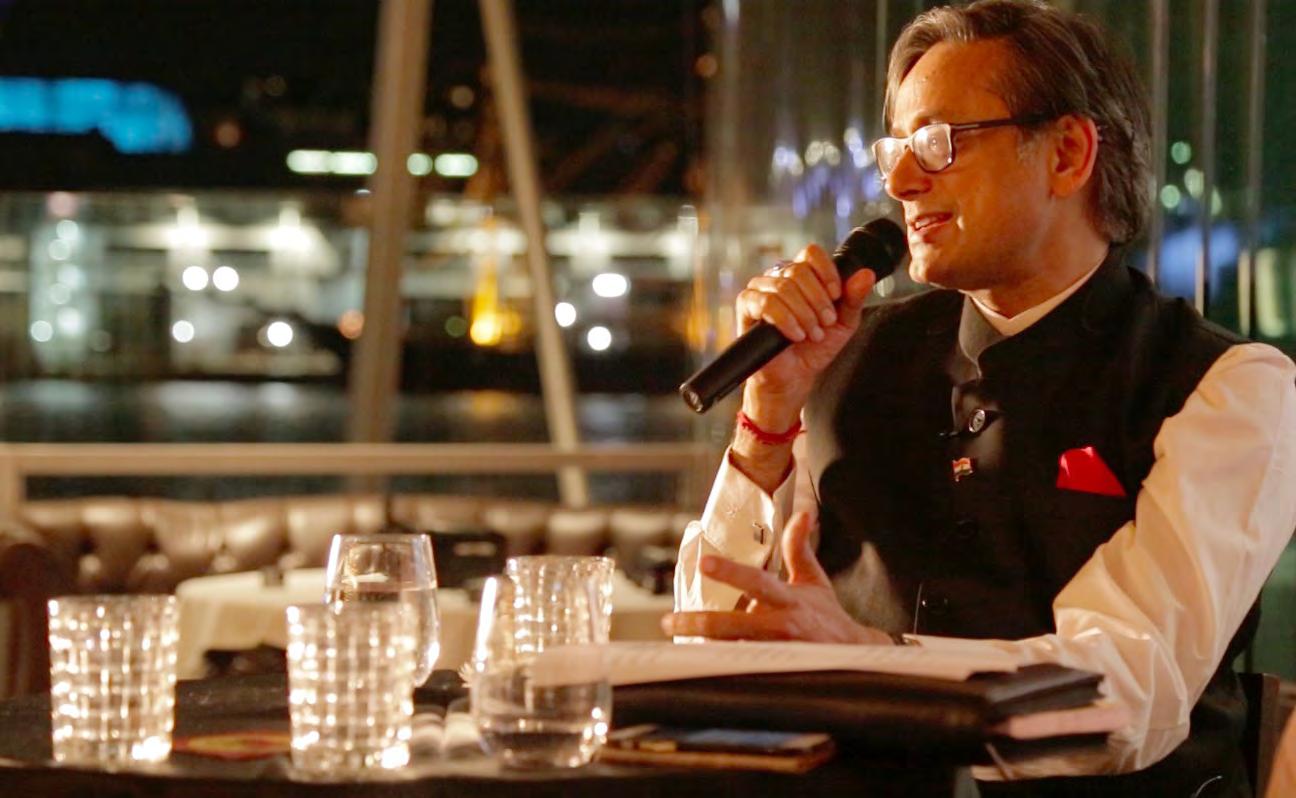
It was an evening that fully lived up to its name: Thoroughly Tharoor. Here are excerpts from Pawan Luthra’s interview.
Q. This is your fifth visit to Australia. What appeals to you about Australia?
Also, what has surprised you about it?
A. It’s a great country. The sun shines a lot. For me, this particular visit is special because of the interest that book appears to have generated. What has surprised me is that this has coincided with your internal debate about the legacy, the statues, in a society that is increasingly conscious of itself as multiracial, and that is fascinating. I remember the days not long ago when Australia had a white Australia policy, when politicians could openly say things like ‘Two Wongs don’t make a White,’ and where one saw Australia rather set in a particular view of itself, and which has changed dramatically in the last generation.
Q. There are obvious parallels between the colonisation of our two countries, and the issue of ‘righting’ of history is hotly debated here as well, just at the same time as your own book comes out. What are your thoughts there?
A. My part in it is entirely coincidental. I happened to be invited to Oxford University (in 2015). Somehow, the speech there about Britain owing India reparations captured the imagination of Indians and Indian diaspora. When it went up on the internet, it was downloaded 3 million times in the first hours. In ngland, they have agreed to teach a different version of history at the university. It’s shocking that you can do A levels in history today without learning colonial history and I think it’s important that they do that. I have also pointed out that a city full of museums doesn’t have museum to
colonialism. It’s shocking that there isn’t a place where school children or foreign tourists can go to see the history of the British engagement in the World War. It’s all brushed under the carpet. And it’s replaced by these gauzy romanticised soap opera type shows, which reflect a distorted view of the reality and cut out the Indians who were colonised. It’s certainly time for people to wake and smell, not the coffee, but the spices.
Q. Do you think that with Brexit, parts of this history would be even more brushed under the carpet?
A. Paradoxically, the opposite has happened. When Brexit happened, a bunch o nglish o ficials, some ci il ser ants and some people close to the ruling onser ati e arty, floated this i arre notion that it didn’t matter that Britain was leaving the EU because they would resurrect what they called Empire 2.0. I was in the UK at the time and said that given the fact that Empire 1.0 was such a bad idea, who would think Empire 2.0 would be resurrected? Moreover, the terms of trade available then won’t be available now. When the East India Company came to India, they started trading. And then they realised that it’s far easier to trade at the point of the gun. Now this is not possible between two sovereign equals. This scuttled their case quite quickly.
Q. Much of what you have written in the book, we in India have known for many years. Non-Indian readers have
been shocked at the atrocities that the British committed in India. What are some of the responses you have got from outside India?
A. It’s too early to speak about the global response, but the response from the UK and Australia is instructive in many ways. The Pakistanis seem to have related to it as well. (Former cricket captain and politician) Imran Khan called me to say how much he enjoyed the book. That kind of resonance in the subcontinent is not surprising. But in Britain, for example, what you’re seeing is an interesting paradox. There was a wonderful column in the London Times praising my book and saying that every Briton should be ashamed of its record in India. The pushback came from an Indian there. It’s interesting that the brown-skinned Britons felt more obliged to defend their Britishness. During a conversation, one person said that, “As a true Conservative, I believe we should have traded with you and not conquered you.” He said no Englishman can be anything but apologetic for what the British did to India.
Q. You seem to have set a date for possible positive action from the British for an apology, April 13, 2019, the 100th anniversary for the Jallianwala Bagh massacre. For our non-Indian guests here, can you give us a background to this horrific incident in history?
A. The Jallianwala Bagh massacre took place on April 13, 1919, and in many ways
was emblematic of the worst of the Raj. India supported the British in World War I. And it did so at tremendous cost. Taxpayers and rajahs contributed to the war effort. 1.3 million Indian soldiers fought for the allies. 76,000 of them perished in the cause. In fact, it can be argued that without Indian help, Britain wouldn’t have been able to fight orld ar I. he reason nationalists supported Britain in the war is because they were led to believe that the reward for their support in the Great War would be what they called progressively responsible self-governance. By this, the Indians assumed that they would get the same white dominion status enjoyed by Australia, New Zealand, Canada and South Africa. But the British, true to form, broke their promise and reimposed on India the wartime restrictions on freedom of speech, freedom of assembly and so on. This triggered protests within India and the British sent generals to various parts of India to quell the unrest.
eneral yer imposed ection (prohibiting the assembly of more than fi e people in mritsar. hat he didn’t realise that this was the time of the Punjabi festival of Baisakhi. Many men, women and children from Amritsar and surrounding villages had gathered at Jallianwala Bagh to celebrate Baisakhi. Dyer didn’t issue them a warning, didn’t fire a warning shot. e ordered his soldiers to fire directly into the bodies of the unarmed men, women and children. The only entry and exit gates were barricaded because as he explained later this would make people easier targets. They fired , ullets that day. ery ullet hit a human being. The British claimed 379 people died. The Indians claimed 1,000. The real number is somewhere in between.
And that wasn’t even the end of the tragedy. Dyer closed the gates and forbade any relatives from attending to the injured and they lay dying. Of course, there was an uproar after this. The House of Commons condemned Dyer. However, the House of Lords passed a resolution praising Dyer. A collection was raised to reward him. The equivalent of a quarter of a million pounds sterling in today’s money was given to him as well as a bejewelled sword. He was hailed as the man who saved India.
So, the broken promises of World War I, the brutality of the massacre, the racism and indifference to the Indian suffering that ollowed and then the ustification o it, put together makes the Jallianwala Bagh massacre seem to me as the worst atrocity of 200 years of the British rule.
What my suggestion is that if a member of the royal family could come to Jallianwala Bagh on April 13, 2019, and sink to their knees in apology and regret for what was done in that place 100 years ago, it would have a cleansing effect on these 200 years of imperial sin. Is it likely to happen? Extremely unlikely. Some very senior friends whom I can’t name have told me that ‘If we apologise to you lot, we will have to apologise to many other countries.’


But I hope some of this will create some sort of consciousness about the issue.
Q. Retrospective rationalisation is a way of agreeing/disagreeing and reviewing the past and using the narrative to suit your present position. If we were to look at this decade in a 100 years’ time, who do you think will be asking for apologies from whom?
A. (Laughs) Don’t know where the list would begin! I’m sure there are Iraqis and other Arabs who would be asking for apologies from those who intervened in their country. Many innocent human beings will be asking the Islamic fanatics to apologise for what ISIS and Al-Qaeeda have done. Perhaps there will be a largish number of Americans who will be asking the descendants of Donald Trump to apologise!
Q. We’ve just celebrated Onam, a festival that is celebrated across religions. Is there a message in it for today’s religiously polarised times?
A. Very much so. In fact, what’s striking in the Kerala context is that it is a state in which people of different religions have coexisted for long. It has the world’s









oldest Jewish diaspora. It also has the world’s oldest Christian population outside Palestine because St Thomas came to Kerala around 52AD. Onam was a Hindu religious festival but today it is a festival owned equally by all communities. There is no sense among Christians and Muslims, who make up 25% each of the state’s population, that the festival has Hindu origins. For them, it’s their festival too. So, there is a lot of sharing, gift-giving and celebrating.
Does that have a lesson for the rest of India? Of course, it does. We are living in a time when those who have come to power have unleashed a set of unpleasant forces that have felt empowered by the ascent of the Hindu chauvinistic party at the centre. They are therefore preaching a very sectarian view of what India is all about and that is not at all in consonance with what it has stood for.

Q. There is a crisis of leadership all across the world, including, with respect, within your own Congress party. There is increasing polarisation in the communities in the US, Europe, India and even Australia. Surely you would expect that the more developed we get, the differences should fade away?


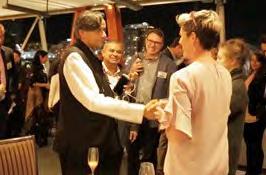
A. Well, it’s not happening, is it? Politics is polarised everywhere: France, the Netherlands, Hungary, Brexiteers in the UK and, of course, Donald Trump in the US. There are two kinds of backlash today. One is against globalisation; because globalisation has produced winners and losers. The losers are saying, ‘Why should we vote for the people who are sending our jobs away?’ So that’s the economic backlash.




My suggestion is that if a member of the royal family could come to Jallianwala Bagh on April 13, 2019, and… (express) regret, it would have a cleansing e ect
The other is a cultural backlash, which only partly o erlaps with the first. It’s a rejection of the globalised, cosmopolitan, sophisticated elite in favour of a nationalism that seems more authentic and more rooted. Mr Modi, for instance, participates in the cultural backlash, but (he rejects) the economic backlash. That’s because the Indian economy needs globalisation.




On leadership, it partially depends on the system. We don’t have a presidential system and were saddled with the parliamentary system. The Prime Minister is simply the leader of the party that happens to get the most number of votes rather than the most popular individual in the country. If we talk about one leader against another, we are playing into Mr Modi’s hands, because he is this largerthan-life leader on a white horse, charging down on his stallion with his sword upraised and who knows the answer to all questions. My point is that he may be that, but why must we offer him another leader on a white horse? Why can’t we ha e a deep ench o ualified and experienced people who can listen to you and understand your problems, rather than a person who says he knows the answers to all questions, but hasn’t delivered much at all in the last two years?

Q. You were one of the earliest adopters of social media among Indian politicians. But there isn’t much of nuance left in the social media discourse. Is it still a valuable medium of communication for politicians?

A. Very much less so than when I started.


I adopted Twitter when none of the Indian politicians were doing it. In a few years, the opposition got onto Twitter. It is almost obligatory to be on Facebook. There are 200 million Facebook users in my country and there is no question of ignoring that. But social media doesn’t have the same utility as it earlier had because initially, you were interacting with real people. You posted genuine thoughts and got genuine responses in the form of comments, banter and so on.
Now, there are so many organised hounds. The BJP has so many of the online cells. On a marching order to a cell, accounts tweet the same message against you. The other phenomenon is a troll who is abusive for a politician like me who has a point of view on everything. Opening up my timeline is a deeply distasteful experience because 80% of the tweets addressed to me are abusive. So all of this has made it less useful than it used to be.
Now, even Twitter trends are manipulated where entire armies of people instruct others to tweet a particular hashtag so that it becomes a trending topic. This has made it much less useful for a person like me looking to engage with the general public.
Q. How do you strike a line between acknowledging history and not be







mired in endless grievances of each side involved in that history?

A. The only way to reconcile the two is y actually finding common ground. At the Sydney Opera House and at the Melbourne Writers’ Festival, people began by acknowledging the land, its traditional owners and so on. There is a danger that this can descend into tokenism or a ritual devoid of meaning, but right now, I get the sense that it means a lot. The majority can acknowledge that there was a historical wrong done which is impossible to undo, but there is a moral case that it needs to be acknowledged. Both the colonised and the coloniser will need to acknowledge something of the other side.
Q. In a democracy, we need a strong leadership and a strong opposition. But because the opposition is not very powerful (in India), the ruling party is having its own way. Why is it that the opposition, particularly Mr Rahul Gandhi, has not been able to counter the government effectively?





A. I recognise that this is a widespread perception. As a loyal Congressman, of course, it don’t share it. I know that Rahul Gandhi is not the dumb guy that is caricatured in the media or WhatsApp. But once a brand has been tarnished that way, it takes a long time to recover. What I do know is that it is important to have a deep bench strength. For example, the BJP had a ca inet reshu fle today and out o the nine new ministers, four are ex-bureaucrats and two had to be nominated to the Rajya Sabha. It should be concerning that the

ruling party that came to power with a crushing majority doesn’t have enough talent to form a cabinet of ministers. On the other hand, in the opposition, there is a galaxy of people that are experienced and have served the country.

When it comes to elections, we should acknowledge the political mathematics that the only way we can come to power (in the near future, to defeat the BJP) is through a coalition.
Q. Is there a danger of Indian and Chinese imperialism that will affect the world in the 21st century?
A. Quite frankly, we have been outpaced by China. While both started from the same place in the 1970s, China is far ahead. The race is over. My bigger worry is China and the US forming a sort of G-2 which would be a disaster for the world. As far as we are concerned, we still have 26% of the population below the poverty line. hile we ha e progressed rom when the British left us with 90% of the population below the poverty line, this 26% is still 26% too many. As long as we can provide each citizen with proper education, health care and jobs, we should be happy. It is not a zero-sum game. India and China can both prosper in their own way.

The danger, I feel, is not an India-China imperialism but rather an unnecessary hostility between the two nations.
Q. In the 190 years of British occupation of India, what may come out as their biggest achievement is that laid the foundation of one
country. Looking forward, with more than 25% of the population not understanding the language spoken in New Delhi, how do you see the future of India in the very long term?
A. I think India has actually grown closer over the years. There is more and more in common in terms of religion and culture. Look at the Indian cricket team, for example, and its uniting effect on the country. Now, you get masala dosa in New Delhi, and salwar kameez has already overtaken the sari as the most popular attire in South India. So there is much more integration now. There was an unnecessary ker u fle caused y some members of the BJP recently over Hindi as the national language, whereas it is the o ficial language, apart rom nglish. There were some calls on Twitter for a separate state to oppose this, but they quickly died down. The big advantage India has as one country, is that it’s a larger playing field or e ery ody, an open market, a stronger economy and military. So I don’t think it’s under threat at all. Kashmir is a protection problem, but I see greater clamour from the North-East for acceptance in the mainstream.
Q. We have adopted the democracy system and you have said that it is perhaps not the best system. What system in your view is the best system?
A. I’ve been on a bit of a campaign for the presidential system because Indians instinctively vote for individuals rather than parties. I am a big advocate of
• It’s possible today to do A-Levels in history in Britain today and not learn a single line of Indian colonial history.
• You can find a statue in the heart of London commemorating the animals that died on the Allies side of the two World Wars, but not a single memorial to the 1.3 million Indian soldiers that fought in World War I or the 1.7 million that fought in World War II, on behalf of the British empire.
• When the British arrived in India, the country had a whopping 23% share of the world’s economy. When they left, it had just 3%.
“I think you have to tell the English: isn’t it time you woke up and faced the reality of your own past?” said Shashi Tharoor to his enthusiastic audience, at the end of his discussion with Raph Epstein at this year’s Melbourne Writer’s Festival on 2 September.
The award-winning writer and Lok Sabha MP was there to discuss the arguments of his latest book, Inglorious Empire: What the British did to India, which looks in detail at the devastating impact the British East India Company and, eventually, the Raj, had on its so-called ‘jewel in the crown’.

directly elected chief executives in all the levels of governance. It strikes me as shameful that a businessman who wants to set up a factory in a town in China can go the mayor and get all the clearances. In India, however, the mayor is no more than a toothless and powerless leader o a glorified committee which has no powers either. So the businessman is at the mercy of some unelected bureaucrat for all the permissions. I don’t agree that democracy re uires us to e ine ficient. e can e an e ficient democracy in a system of directly elected chief executives.
Q. Do you find it easier to deliver your important messages as a politician than as a diplomat?
A. Politics is much tougher work. In my first year in politics, I ound my ack perforated with stilettos not only of my political enemies but my ostensible colleagues who clearly resented my entry into the fold. Some would say that I have still not fully adjusted to politics because of the way I speak my mind. But I have to be the person I am. Because of my views on certain issues, I have been called a quasi-BJP supporter. But I speak from a clear set of yardsticks as to what is right, moral and advantageous to the country. I would continue to speak my mind. I will never tailor my words for the convenience of my party. But when it comes to expressing what I see is the right thing, I will do it. It might not always be the politic thing to do, but it gives me a clear conscience when I sleep at night.
In his persuasive and thoroughly engaging discussion, Tharoor merrily debunked the most trotted-out apologies for the empire:


Quoting Nehru, Tharoor quipped that the Indian Civil Service was in fact, “neither Indian, nor civil, nor a service!”
“The British had this pretense of promoting responsible self-government. But in practice they had absolutely no intention of relinquishing any real power to Indians,” he said, citing the ‘appalling’ racism that the few Indians who did make it into the top ranks of the service suffered, including Oxford/Cambridge educated judges who were literally driven to drink and suicide.
They gave us democracy
“First of all, no one gives you democracy. It’s a bit rich to torture, maim, shoot, imprison, and jail a people for a couple hundred years and then celebrate that they’re democratic at the end of it!” Tharoor said satirically, to appreciative applause.
The British could claim that they gave Indians the vote, but in reality, only one in every 250 Indians was eligible. Not only that, but they deliberately divided Indians into communal electorates.
Muslim voters had to vote for Muslim candidates for seats reserved for Muslims, and the same applied to Hindu, Sikh and Christian voters.
As Tharoor said, this was because “They wanted to foment separate communal consciousness in order to prevent democracy emerging.”
They gave us the rule of law
“It was applied with excessive attention to the skin colour of the defendant,” Tharoor parried.











In fact, just three cases of Englishmen being convicted of murdering Indians have ever been found by scholars, although hundreds of murders undoubtedly happened.
Furthermore, India is still “stuck” with the brutal penal code introduced by the British in 1861, which is why it is one of the few democracies in the world where homosexuality is criminalised, and why it has the most “draconian” sedition laws than any sedition law anywhere.
They gave us the free press
Tharoor conceded that the British did indeed leave India with a free press.
“Mind you,” he added, “they imposed a lot of restrictions on the Indian press.” He went on to describe the bestowing of a free press as strategic - part of the need to justify empire in the public space, in an increasingly democratic and liberal Britain.
“Behind closed doors, they were absolutely ruthless and had no illusions about what they were doing. But in the public space, in the public sphere, they had to ha e this language o ustification.
A new nostalgia about Empire seems to ha e descended two new films have come out this year about colonial India, neither of which seems to care to e amine the rapacity, cruelty and horrific racism that was the reality of the British project.
Tharoor believes that the past should be left in the past, but also that acknowledging it allows a better appreciation of the present.
“You know, one of the challenges with our culture as a whole is that we are very much a forgive-and-forget kind of people,” Tharoor mused. “Very little seems to last…and that’s good, because honestly rancour and bitterness are, terribly negative emotions…but I think we should forgive, but we should not forget.”
Aparna AnanthuniAt Melb Writers’ Festival, Dr Shashi Tharoor says that the British need to face the reality of their past in India


















































































































































































































































































































































































































































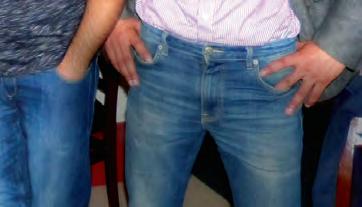














INDIAN LINK RADIO LISTENERS GET A CHANCE TO MEET THE REAL PEOPLE BEHIND THOSE RADIO PERSONAS































listeners Navdeep, Akki and Gaurav are happy to meet with Sagar Mehrotra (extreme left) and


Say goodbye to plain and boring. Because when you experience a Mojo home, you’ll never look at home designs the same way again.
As part of the MJH Group, we tap into over 30 years of award-winning home building experience to offer you a range of homes that are the perfect mix of good looks, clever thinking and big personality –without the price tag.
We’re Mojo Homes. And we can’t wait to help you create a vibrant home that is unique to you.







Their commitment to the permanence of their love affair began with a visit to a store borne out of the passion of a metalsmith and sculptor – you might have heard of Georg Jensen.
On the 8th day of the 8th month of the year 2008, amid the sparkles and lustre of art inspired elegance, Sam and Zlatko chose their engagement rings together as a symbol of their serene and spirited love while the streets of Melbourne buzzed beyond.
BY ANEETA MENONAustralia. Since then, the matter of whether the law should be reverted to its initial state has been hotly debated.
we, as a community, usually celebrate with reckless abandon.
“Who loves and values weddings (and, along with it, marriage) more than our community?” asks Kharishma D’Souza, a corporate banking professional and mother who recently represented Indians on a marriage equality panel in Sydney.
From 12 September, the Australian Bureau of Statistics will be mailing out the Australian Marriage Law survey - a postal poll commissioned by the federal government to gauge levels of support amongst Australians regarding a change to the Marriage Act. The survey is not compulsory, and is not a formal vote to change law. The question will read “Should the law be changed to allow same-sex couples to marry?” and the options to respond will be a simple Yes or No. After its introduction in 1961, the Marriage Act been changed twice. Initially, the legal marrying age was 16 for females and 18 for males. This was amended in 1991 to equalise the Act, making the legal marrying age or all people. rior to , there was no specification in the arriage Act regarding the gender of those seeking to wed. Under the Howard government, the Act was amended without consultation of the electorate to specifically prohi it same sex couples to be recognised as married in
The issue has been as divisive as it has been prolonged, despite routine polling showing that the majority of Australians now support the change. Core opposition to marriage equality comes from socially conservative religious groups, who claim the changes to civil law will impede their religious freedoms. As evidenced by the precedent set by over 22 other nations over the last 17 years, this is simply not the case. Religious organisations will remain free to conduct their ceremonies in line with their beliefs.
other minorities the same access to live equally. Despite many claims otherwise, same-sex and de-facto couples in Australia do not already have the same civil rights as married couples. A crucial area in which there is inequality is surrounding the death rites and enefits o partners, including eing listed on the eath ertificate as next of kin.

Some time later, by chance, and perhaps by some providence of Paramatma, a faulty watch led Sam on a quest to find his right time. From his many broadcasts for assistance, it was the reply from Georg Jensen’s homeland which helped Sam to recover the perfect function of his timepiece.
In most sub-continental cultures, death rites are one of the most important parts of existence, and a situation where a spouse can be denied input over what happens is unthinkable. This is just one of the many ways amending this law will directly impact people.
Sam & Zlatko’s Surprise Wedding
When talking to immigrants, particularly those from the sub-continental community, about why they’ve chosen to live in Australia and what they love about it, the answer is almost always freedom. Australia permits our subcontinental community the right to practice our beliefs and embrace our culture free of persecution or discrimination.
s we en oy the enefits o tolerance and acceptance of the greater Australian community, it would be wrong to deny
Whilst the proportion of same-sex couples is comparatively low in subcontinental communities, it is not nonexistent. When I approached a gay friend in a committed-long term relationship to contribute their views for this article, I was met with apologies, and the heartbreaking explanation that “Only a select bunch of Indians know, so that Mum doesn’t get dragged through the mud. Especially while my Nana is alive.” So, whilst we’re usually talking about the community at large, it is important to remember that we must also consider those in our communities who face discrimination, shame and, above all, fear. Not just for themselves, but for their loved ones, about an area of their lives that

Growing up in Malaysia, it wasn’t until Kharishma moved to Australia that she was able to see the possibility of true equality. “I had plenty of people in my own circles who were discriminated against, but in Australia people are quite accepting. Being different was celebrated.”
The panel, attended by representatives of the multicultural community, was positive and many of the questions were answered. When asked why Kharishma was passionate about this, she said that it was important for her to be part of the way forward for her children and the next generation. “It is our turn to do this. We all love living in Australia, and this (freedom) is why.”
The Asian Australian Alliance, a group that represents the interests of Asian communities in Australia, agrees with Kharishma.
Speaking on the matter, Molina Swarup Asthana, convenor of the Asian Australian Alliance, has said, “LGBTI Asian Australians are being treated as
To ensure that our families and communities are safe, embraced and respected, we must ensure that all the other communities in Australia are safe, embraced and respectedMelbourne-based Indian academic and Odissi exponent Dr Sam Goraya wed his partner, creative artist Zlatko Varenina, in Copenhagen in 2014
second-class citizens as they are currently being discriminated under the law and are being excluded from the civil institution of marriage, which is a right that must be available to all Australians.” Concurring with other community view, she concluded, “To be able to marry and form a family is a basic human right.”
Over time, much of sub-continental culture (both in India and abroad) has been hi acked to ser e personal interest, profit and patriarchy. Therefore, the personal discomfort felt by some of our community by concepts such as marriage equality are understandable. Hesitation, fear and prejudice are due to the multigenerational conservatism entrenched in global Indian culture.
Speaking from the community itself, Kunal Mirchandani of the South Asian LGBT support group Trikone, urged those sitting on the fence to consider the ramifications o their am i alence. “We’ve all been here before,” he says, and explains, “There was a time not long ago when Hindus couldn’t marry Muslims, or widows were forbidden from remarrying. e ha e changed the definition o marriage time and again, and the world didn’t end. ery generation gets to define its own values. And this is your chance to make a difference. Be an agent of change. Challenge the status quo, and let’s make history happen.”

However, looking back at ancient India, and specifically induism, pairings such as these were commonplace. This is to be expected as the Hindu philosophy, at its core, focusses on the journeys of the noncorporeal, genderless soul throughout many incarnations until moksha, or liberation.
Hindu pundit Rami Sivan states, “The Australian Council of Hindu Clergy gives its un ualified support or e uality o all citizens before the law and supports the right of everyone to live and love in dignity, peace and security.”

While the Judeo-Christian faiths have mixed feelings on the topic, there are many proponents of marriage equality. “It
is in the spirit of Jesus that we say yes to marriage,” Reverend Dr Keith Mascord said at a Christians for Marriage Equality press conference. “It is not in spite of our faith, but because of our faith that we say yes to marriage equality.” At the time of writing, a Facebook page called “Muslims for Marriage Equality” had over 1,300 followers.
There are many cultural rites practiced by our diaspora that the greater Australian community finds con ronting or uncomfortable. Whether it is the ritual shaving of a baby’s head, the painful piercing of a small child’s ears or the circumcision of male infants practiced in some communities, the fact remains that we live in a secular democracy.
The discomfort of some doesn’t make it banned for the rest, and this is no different. This is what it means to live freely, multiculturally and respectfully. To ensure that we, our families and communities are safe, embraced and respected, all we must do is act to ensure that all the other communities in Australia are safe, embraced and respected.
There are many things in this world, particularly in these rapidly-changing times, that are confronting and morally challenging. Luckily, equality is not one of them.
Because we should all be equal in the eyes of the law. As a lawyer, I see rsthand how laws are used to divide and demonise communities. How legislation can create an unequal society that prevents people from being treated fairly.
Government
gets taught in the classroom, and updating the Marriage Act will not change that.
No changes will be made to how couples conceive or adopt children, regardless of the outcome of this survey This is just about whether couples should be allowed to marry.
Marriage matters to Australian society and it matters to many couples. Changing the law will ensure equal rights under the law to all married couples, regardless of gender.

Marriage equality was first legalised in the Netherlands in the year 2000!
UK, USA, Canada and New Zealand –countries with the largest sub-continental populations (aside from Australia) have all had marriage equality for years!
Over 22 countries, including almost alldevelopednations,have equal rights for married couples. They are:
Argentina (2010) | Denmark (2012) | Greenland (2015)|The Netherlands (2000)|South Africa (2006) | Belgium (2003)| England / Wales (2013)|Iceland (2010)|New Zealand (2013)| Spain (2005) | Brazil (2013)|Finland (2015)|Ireland (2015)| Norway (2008)|Sweden (2009) | Canada (2005)|France (2013)|Luxembourg (2014)|Portugal (2010)|United States (2015) | Colombia (2016)|Germany (2017)|Malta (2017)|Scotland (2014)|Uruguay (2013)
Source: http://www.equalitycampaign.org.au
Because when you suffer, I suffer. As a minority in Australia, I know what it is to be told “You don’t belong here”, through the way laws are upheld, through the treatment I receive from strangers, through what the media says. We are all in this together. We know the sting of being an outsider. Nothing will change unless we stand up for others.
Because, 50 years ago, I wouldn’t have been able to enter this country because of the colour of my skin.

Because nothing will change for me. The sun will still rise in the east and set in the west. I will wake up, take the train, go to my job in the city. I will still pay my taxes and save for my next holiday. I will still be married to my husband. A man who, not that long ago, it would have been illegal for me to marry because of the difference of our skin colours.
Because everything will change for the people I love. My friends will be able to love freely and openly. They will know that the majority of this country backs them, supports them for simply being who they are, for loving who they love. They will be able to have a big lavish wedding and wear that big white dress or a sparkling red sari. They will be able to have a small intimate affair surrounded by the people most important to them. They will be given a choice.
They will have the choice, like I did, to declare publicly that they found the person they want to spend the rest of their life with and have Australia recognise that as fact.
Because we won’t be separate anymore.
Because we should all be equal.
Sharika JeyakumarThe Australian Council of Hindu Clergy… supports the right of everyone to live and love in dignity, peace and security Hindu pundit Rami Sivan
Australian Marriage Law Postal Survey is a voluntary poll that will be sent to all enrolled voters in Australia.Civil
marriage is different and distinct from religious marriage. No religious group will be forced to marry a lesbian or gay couple against their beliefs.State
and your local school decide what
Kashif Harrison (KH): Alan, welcome to Indian Link Radio. You’re originally from Delhi, you’re a dad of two kids, and you’re from Trikone Australasia.
Alan Maurice (AM): I am. Trikone is a social support network for South Asian gays, lesbians, bisexuals. I came to Australia in 1977, as an 18-year-old. I lived with my mum here. She arranged for me to meet with a ortuguese girl one day. I figured later that it was probably just as good as any Indian arranged marriage (laughs). We met, and within a year I realised I had some feelings for her; I didn’t start with any feelings for her, so I thought this Indian idea of arranged marriage must be real because obviously you don’t all in lo e at first sight, there’s no such thing. We got married a year and a half later. I was . e had our first son when I was 28. Today, he is 31. Our second son came along in 1992, and at the same time as that happened, these (other) feelings started to get much stronger in me. Even though I was really happy for 10 years in my marriage and life was great - we had great social life etc - I think I was trying to hide something. We went out a lot; I dragged her to every Indian mo ie I could find ecause she’s not Indian met with family, went out dancing and clubbing with friends. When our second son came, there was this explosion of emotion and at the same time I met somebody in my workplace, an English guy I felt completely in love with. I had no idea what was going on actually. I then started to realise ‘Achcha, so this is love, this is what it means’. Well not so much ‘this is love’, but more like ‘this is love at first sight’.

My challenge was, I was still in love with my wife; in fact, I still am. It was a very dark period for me and it was very hard for her - but I knew I had to move out of the marriage. My boys were very young at the time, aged four and one. I lived together with my new partner for 16 years.
During that time I was very connected to my wife and my sons. I would go twice a week and spend time with them, sing them lullabies at night, make up stories to tell them at edtime. ut it was a ery di ficult time. I think they were too young to realise the detail, but it’s hard enough when a marriage reaks up, and it’s definitely hard on children. I know this from my own experience when my parents broke up.
So what she and I did was, we put our children first and we tried e erything possible to make sure their lives were balanced - I hate using the word ‘normal’. Skyway through many years, today we have a very good relationship. In fact my ex-wife and I only became ‘ex’ about three years ago - we were still married for all those years. We just didn’t see the need to get a divorce, I think we both felt that it was a clear-cut arrangement.
So anyway, we still have a good relationship. My sons and I are good too; my older son did go through some di ficult times that was
more to do with the break-up of his parents than anything else) He’s a very strong guy; emotionally he’s a bit charged up so I wasn’t sure how to deal with it. ut o er the last fi e years we have a very good relationship and we’re in business together. One son’s a builder and the other’s an electrician, and I manage their books for them.
KH: You don’t look like a father of two boys aged 25 and 31! So here’s the thing Alan, one of the issues in the ongoing debate about marriage equality, is that same-sex relationships are not good for kids. The perception is that parenting styles are not healthy, and that the kids face physical and mental health issues. But you seem like a wonderful family man: what was it like raising two kids that you seem really proud of?
AM: ook, it’s definitely not easy, I wouldn’t rush out and say, go have children. But to me it makes no difference if you are gay parents or straight parents. If you’re going to have unhealthy children, it’s going to happen, more out of bad habits and not looking after them and watching over them, than anything else. You only have to look across the whole spectrum of families to see how much dysfunction there is anyway. So from that point of view, we are really blessed. But, sure, we did have problems. Going to soccer matches, or parent-teacher meetings, it was always di ficult, ecause in aria ly, someone was looking and saying ‘Where’s their mother?’ or when she went, ‘Where’s the father?’. Even at that level, there is a taboo, as to why the parents aren’t together. n the soccer field, guys might make jokes about gays… and you have to watch your son try to process this horrible experience, of someone saying something knowing his dad is standing right there. And you think, do I say something? How do I support them? It’s a really tough time. And they went through some really tough times. One day my younger son and I were walking down the street in Newtown where I live and these young guys drove by and screamed out some homophobic abuse. My son, 13 , was in complete shock. He couldn’t believe it. But it actually made him stronger in his desire to defend people like myself right across. Now, he’s got a strong sense of social justice from things like this.
KH: At 25 and 31, your boys must be looking at relationships themselves. How are you going to deal with that - if their family is not open to the idea of same-sex marriage or same-sex parents?
Have you thought about that?
AM: Think about it all the time. In fact, e en when they meet a girl or the first time, our first reaction is oh god, now we have to come out again’ in some shape or form. But the blessing is that both my sons are completely okay with it. So when they meet girls, they are really upfront about the
situation - my dad is gay; he’s got a partner, blah blah blah. If you’ve got a problem, speak now. And if it’s a problem it probably ends what was a short-term relationship. I don’t know, they’ve never said it has caused a problem, they are totally cool.
KH: Have your boys been to India?
AM: I took them to India or the first time in 2015. They don’t speak any Hindi. I have a pretty good relationship with a bunch of guys and girls from school, you know - the typical WhatsApp group and that kind of thing. And I am pretty open on Facebook. While friends and family are completely okay with everything, nobody talks about it. I think we discussed it once in one or two sentences, and then it was like ‘Chalo, khao piyo (let’s eat), let’s have a good time’. So that’s about it. They know my sons are quite cool about it, they were quite loving to my sons and made them feel at home. So it was really interesting.
KH: What about the young generation in India?
AM: No in fact, most of the younger generation don’t have any issues.
KH: In the current debate on the issue though, it is said that the Indian community here will probably not accept same-sex relationships.
AM: Yes it’s really interesting, and it happens across most cultures. There is more exposure in India, than there is the Indian community here in Australia. I think it is mostly because when you are a migrant in a new country you kind of lock yourself into the Aradhana class of songs (that you just played!) rather than realise that it is 2017 and maybe there is a new song that is out. So maybe the mentality and everything else is still locked into the Indian you were when you left, or when your parents left and came here. And it is usually the parents that are forcing this mindset.
I stay tuned into Indian news. There’s a lot of stuff happening in big cities. They are having Pride Marches all over the place, which takes a lot of courage because legally, it’s still an issue over there. Some people are really open about it, they are out and proud; and some others are struggling and finding it really di ficult. amily pressure is still a huge thing. They obviously don’t want their children to be gay. They want them to marry
and some parents will say ‘we don’t care if you are gay, you must get married anyway’.
KH: Obviously you’ve been through a lot, but you’re definitely standing up for what you believe in - you’re teaching that to your kids as well. Now, let’s talk a bit about the same-sex marriage postal vote.
AM: To clarify, the actual vote is not going to be due until early November. For me personally, I’m going to be 60 next year. So for me, the marriage thing is not so important. I have had a marriage, I have had a long term relationship and my whole thinking about relationships is different. So I’m not going to rush to bring out the shervani… Marriage equality for me is about equality. It’s about (the fact that) you and I are human beings, we are both equal, we have the same feelings, we have the same emotions, we are the same. And so, what equality does is, it simply raises the bar yet again to say ‘these people are normal’. Which everybody thinks is not the case. We are exactly the same, and by changing it in the law, it gradually changes it in society. And that takes the pressure off children who are being constantly told that there is something wrong with you, or something wrong with your dad. So from a generational point of view, it’s very important that children are made to feel that it’s okay. We have enough negativity around in the world today, enough really bad stuff happening, to not allow children to grow up in a healthy, loving atmosphere.
KH: What are your plans for Father’s Day, Alan?
AM: My sons have invited me and my partner to my mother’s place, where she is going to cook an Indian meal. Both my sons love Indian food. The extended family catches up once a month, there’s about 1517 of us. But tomorrow is just for me for Father’s Day, and my sons.
KH: Happy Father’s Day to you. I’m so glad to have had you in the studio to tell us about your journey. You’re celebrating Father’s Day the same as the rest of us. It doesn’t matter what your sexuality is, you’re living the same normal life like everyone else.
AM: (Laughs) I’m living the same boring life as everyone else!
KASHIF HARRISON speaks with Alan Maurice on what it means to be a gay dad
Following a huge outcry in the Indian-Australian community over the controversial depiction of Kashmir in an SBS video about the Partition of India, the national public television network has uietly modified the map.


While the earlier map showed the entire Jammu and Kashmir state as disputed territory - which had raised the hackles of several Indians the modified ersion o the video clearly shows Indianadministered Kashmir, Pakistaniadministered Kashmir on the state’s western edge and the Chinese-administered Aksai Chin region on the state’s north-east tip. Indian Link had, in its Sydney edition for the second fortnight of August and Melbourne edition for September, carried a cover story on the community’s outrage after SBS broadcast the map. The story had also reported on the strong action taken by the
Indian government authorities in Australia on the episode.
India’s High Commissioner to Australia, Ajay M Gondane, had issued an ‘oral demarche’ to the Australian government on the subject. India’s Consul General in Sydney, B Vanlalvawna, had also written to SBS, conveying its ‘strong objection to this wrong depiction,’ and provided it with the approved political map of India.
Some Indian-Australians had also approached their respective public representatives over the issue, prompting Michelle Rowland, Member for Greenway, to write a letter to Michael Ebeid, CEO and MD and SBS on the subject.
Balesh Dhankhar, a Sydneybased Indian, had also launched an online petition, addressed to the Minister for Communications itch ifield, on change.org. It had received over 5,300 supporters in a little over a fortnight.


SBS had earlier issued a media release, strongly denying the allegation made in the online petition that SBS was ‘anti-Indian.’
Referring to the change in the graphic, an SBS spokesperson said, “To assist our audiences to better understand administrative arrangements in the Kashmir region, SBS has made some enhancements to the map in the story on the SBS World News ace ook page or clarification.
“SBS is always mindful of community sensitivities when reporting on global issues and tensions such as this and ensures it remains impartial and balanced in its reporting. SBS has long been a supporter of the Indian community as it is to all the communities we serve.”
It remains to be seen whether the modified ersion o the map mollifies the outraged mem ers o the Indian community.
Harshad PandharipandeIndia will be the leading source market for tourism in Australia in the next three years, a report by professional ser ices firm eloitte has said.

The report adds that Australia will reach its target of $115 billion in overnight spend by 2020.
A leading source market will be India, with arrivals expected to grow at 12% per year, followed by China and Indonesia , and .
hese figures come rom the assessment of Bryon Merzeo, consultant for Deloitte’s Tourism, Hospitality and Leisure industry group.
It is clear that tourism will remain a high performing sector - along with gas, agribusiness, international education, and wealth management.
This year alone, international arrivals to Oceania (including Australia) have been up in the first our months.
Merzeo notes that, according to a Tourism Australia survey, Australia ranks number one on scenery, sight-seeing, being financially worth tra elling to’, and is an exciting place for conferences.
He says the inbound tourism boom is being egged on by the soft Australian dollar still only valued at around US$0.78 cents.
As well, growth remains strong across many sub sectors of the travel industry,
notably into Australia’s state capitals, which are seeing a hotel building boom. These gateway capitals are also enefiting rom more cruise ships arriving, more direct flights eing added rom overseas markets, (Qantas will soon fly ondon to erth direct), and continued high demand from overseas tourists.
However, there are disparities and growing pains, says Bronwyn White, strategist and co-founder of MyTravelResearch.com. White says she is concerned about inadequate dispersal of tourism dollars beyond Australia’s visitor hot spots.
She believes tourists visiting friends and relatives, especially those from Commonwealth countries such as India, should be encouraged more.
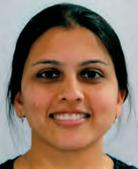
With Tourism Australia no longer responsible for promoting Australia to its home market, local authorities and councils have to reach out to domestic and international travellers.
“Many upcountry local authorities and councils need etter financial planning,
tourism investment support and marketing guidance to really get their share of the tourism dollar,” says White.
Labour supply and skill levels will also be a challenge. With a hotel construction boom underway – there are over 125 new properties in the pipeline across the country – MyTravelResearch.com tourism industry members wonder where the workers will
come from to sustain the hotel and tourism boom.
er eo notes that ustrade had identified the challenge and has commissioned tourism labour force surveys.
Labour and room supply notwithstanding, Merzeo says, “We are in a fantastic place with a lot of positive growth signs. Everyone seems to love Australia.”
Tax return & Accounting Services:
We offer Tax Refund On Spot*, means Tax Refund in Cash in 1 Hour*



GST/
Loans: Home Loan/Truck loans/ Car Loans FREE
Refinancing/ Business loans/ Construction / Low Doc loans
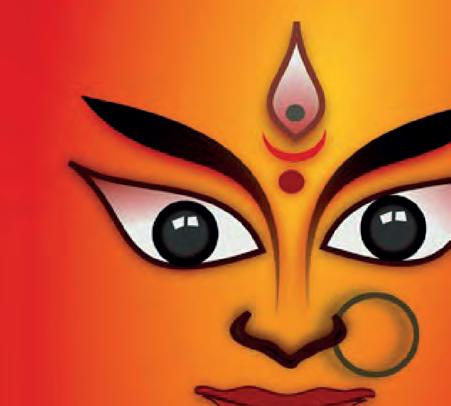


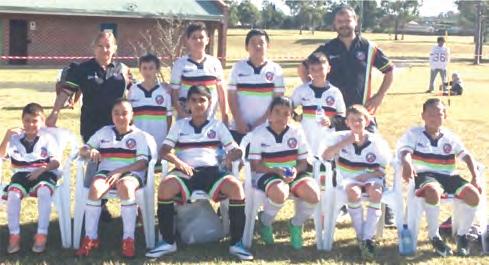
- We will make sure your voice is heard.
- Lobby for better schools and hospitals.
- Work towards cleaner streets, safer community and crime prevention.
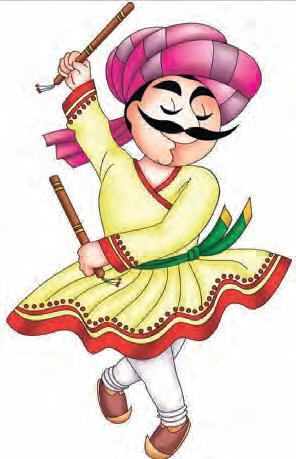
- Find solutions towards parking and traffic problems.



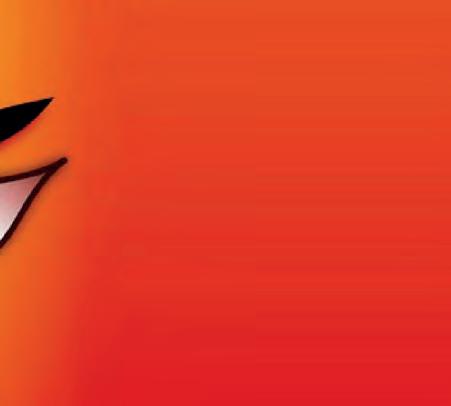
- Work to secure more parks and open spaces.
- Continue to support the elderly and pensioners.
- No over developments and work for better designs for families.
- Stop residential areas from over development.
- Improve garbage service collection to limit garbage clean up service.
- Improve footpaths and roads for safety of our community.
SPIRITUAL
ATMA: Music and Movement
Sun 10 Sept (3:00 pm - 4:30 pm)
As part of this year’s Sydney Sacred Music Festival, ‘Ātma: Music and Movement’ takes a journey through the sounds of spiritual India. ‘Ātma’ will depict the pathway towards self-ful lment through the ancient Indian art forms of Carnatic music and Bharatanatyam dance at Friends of Mahratta, 25 Fox Valley Road, Wahroonga. Details info@culturalartscollective. com.au
Satsang
30 Sept – 1 Oct The Sydney Shree Ram Sharnam prayer group is organising its annual satsang at its 23 Sheba Crescent centre in South Penrith. Two days of invigorating upliftment, focusing on cleansing the mind via meditation and nourishing the soul through prayer, singing and silence is on the agenda.
Details Vimla Rao 0415 483 459, Raghav Nanda: 0423 718 784

COMMUNITY
Hindi Divas
Sat 16 Sept Indian Cultural Centre at the Consulate General of India (Sydney) is organising Hindi Divas at Level 2, 265 Castlereagh Street, Sydney, 2.30pm onwards RSVP: library.sydney@mea.gov.in
Sun 17 Sept The IABBV Hindi School celebrates Hindi Divas at Thornleigh West PS, Giblet Avenue, Thornleigh, 10.00am onwards. Program includes Hindi poetry competition for kids.
Details Mala Mehta T: 0412283677
Q and A on Visa and Immigration
issues
Wed 20 Sept FIAN welcomes Alex Hawke MP, Member for Mitchell and Assistant Minister for Immigration and Border Protection for a Q and A with the community. 6.30pm at Madison Function Centre, 632 Old Northern Road, Dural. Details aninc1@gmail.com
ENTERTAINMENT
Cruise ‘N’ Booze Dance Party 2017
Sun 17 Sept (2:00pm – 6:00pm)
Panjtara Idols’s Cruise ‘n’ Booze dance party. Ladies-only event for girls 13 years and over. Wharf 9, King Street
Darling Harbour. Details Sucheta 0424 258 742
Magic show 23 and 24 Sept 15-year-old multiaward-winning illusionist Saksham Sharma presents his magic show Saksham Magical Madness as part of the Sydney Fringe Festival. 3.30 pm at Leichhardt Town Hall, 107 Norton St, Leichhardt.
Bookings www.sydneyfringe.com
A R Rahman Live in Concert
Sat 30 Sept (7:00pm start)
Double Academy award and golden globe winner A R Rahman is celebrating 25 years of this music journey. Along with the world’s best singers, musicians, lighting and visuals, this night will have everyone’s favourite Rahman songs, from his debut to the world famous ‘Jai Ho’. Qudos Bank Arena, Sydney Olympic Park. Details www.arrahmanlive.com.au
Stand-up Comedy
Fri 13 Oct India’s leading comedian
Johny Lever performs with his daughter Jamie Lever and his own orchestra at C3 Conference Venue, George St, Silverwater. Details 0412 779 418
FESTIVAL
Devang Patel Dandiya 2017
Sat 16 Sept (7:30 pm - 11:00pm)
Devang Patel is an Indian singer, actor, songwriter, dancer, lm producer, director and music performer. Whitlam Leisure Centre, 90A Memorial Ave, Liverpool.
Details Mukund Panchal 0450 636 287
Durga Puja
Sat 7 Oct Swagatam Group, an aspiring team of eight families from West Bengal, present the rst ever Durga Puja in Western Sydney. Thornton Community Centre, Penrith (5 minutes’ walk from Penrith Station). 10.00am to 3.00pm including Bengali style lunch.
Details 0423 520 454, 0451 969 380
KarvaChauth Mela
Sun 8 Oct Women’s festival at Bowman Hall Blacktown, 4.30pm –10.00pm. Details 1300338 368
EXHIBITION
Jaipuri miniature
1 - 16 Sept Master miniature
Ajay Sharma Ajay Sharma and
partner Vinita Sharma of Jaipur will be presenting new works at AirSpace Projects, 10 Junction Street Marrickville.
Workshops: SquarePeg Studios and AirSpace Projects are hosting 2 weeklong workshops with Ajay Sharma. Spend a week learning miniature painting, engage with an ancient and beautiful painting technique, drink chai and create your own miniature painting.
Workshop 1: Mon 4 Sept – Fri 8 Sept, 10am to 4pm (Booked out)
Workshop 2: Mon 11 Sept to Fri 15 Sept, 10am to 4pm.
Details Brenda Factor 0411 370361 or classes@squarepegstudios.com.au
Race Discrimination
Commissioner’s Student Prize
2017
The Race Discrimination
Commissioner’s Student Prize is an annual competition for school students aimed to promote research and discussion of racism among young people.
Entries close 15 Sept, 2017. Students in Years 10 and 11 at a school in any Australian state or territory are eligible to enter. Entrants may write an essay (maximum 1,000 words) or record a speech (video or audio, maximum 5 minutes) and submit it to the Commission via the entry form.
Entrants must answer one of the following questions:
1. The best way of killing ugliness is with kindness. To what extent should this guide our society’s response to racism?
2. Fighting racism demands that we also defend liberal democracy. Discuss.
The winning student will be awarded a book voucher from Dymocks worth $150.00.
Vedanta classes with Arsha Vidya Australia
All classes except chanting classes are on Zoom. Details Shankar Arunachalam on 0403 059658 or arunachalam.shankar@gmail.com
Bhagavad Gita, Sundays 6pm Upanishads, Saturdays 8.45pm Beginners class, Sundays 2pm
Vishnu Sahasranama, Sundays 10am Vedic chanting classes, Saturdays 6.30pm
FUNDRAISER
## Swacch Bharat
Help provide nancial support for Swacch Bharat mission through the Sulabh Social Service Organisation. The ongoing campaign invites all persons of Indian origin to generously donate for Swacch Bharat. Donations can be made to Sulabh through Western Union. Bank details are below in favour of: Sulabh International Centre For Action Sociology (SICAS) Account no: 63012660749
IFSC Code: SBIN0030262







MICR: 110002347
Name of the Bank: State Bank of India, Branch Name: C 28 Community Centre, Janakpuri, New Delhi-58 Contact: bharatramvasudevan@gmail. com
YOGA
Free Yoga with Divine Life Society
Tuesdays 7pm Swami
Uditramanandaji of The Divine Life Society of Australia offers free Yoga classes every Tuesday from 7.00pm8.15pm at Strath eld Girls High School. All levels of tness welcomed. Entrance via Oxford Rd.
Details Karo 0413 535 157.
Yoga: The way of life
Saturdays 8am; Wednesdays
7pm A retreat for body, mind and soul, join weekly yoga sessions at Glenwood Public School (Saturdays) or Moorebank Community Centre (Wednesdays).
Details Meera 0433 125 708.
Spirit of India Yoga

Saturdays and Sundays
Yoga classes are held in Ryde, Wentworthville, Quakers Hill and Epping. All levels incl. beginners, senior citizens, children. To enrol in this 15 week course email spirito ndia2002@ yahoo.com, visit www.spirito ndia.org. au or contact Suresh 0412 202 182
LIST YOUR EVENT EMAIL:
media@indianlink.com.au

























Journalist Lankesh laid to rest; SIT formed as condemnation pours in Senior Kannada journalist and social activist Gauri Lankesh was laid to rest with state honours in Bangalore on 6 Sept, a day after she was shot dead y three unidentified assailants, evoking widespread protests and condemnation across the country.
“A SIT has been formed, headed y an Inspector eneral le el o ficer, to investigate the journalist’s killing,” Karnataka Chief Minister Siddaramaiah said in a statement.
The Congress leader said that if the family members insist on a CBI investigation, the state could think about it. “I have an open mind,” he said.
CCTV footage from around the residence has been recovered by police.
The Union Home Ministry has sought a detailed report from the Karnataka government on the killing of the senior Kannada journalist.
Media fraternity and activists gathered across the country in cities including New Delhi, Mumbai, Hyderabad among others condemning her murder.
Lankesh, 55, was buried at a cemetery in Chamarajpet in central Bengaluru. Her eyes were donated to be used for the needy, the family said.
She hailed from the Lingayat community that does not cremate its dead.
Her brother Indrajit Lankesh had earlier told reporters that the family would not be following any religious customs at the funeral.
“She was a rationalist and we do not want to go against her ideologies,” he had said.
Lankesh was shot dead by three unidentified men who fired se en ullets at her as she returned home rom her o fice in the city. Two bullets hit her in the chest and one in the forehead.
“She was shot dead from a close range at her house in Rajarajeshwari Nagar (in the suburbs) around 8 p.m. as she was entering the house,” Bengaluru Police Commissioner T. Suneel Kumar revealed.
Four bullets hit the wall of the house.
“Similar weapons were used in M.M. Kalburgi, Govind Pansare and Narendra Dabholkar’s killings, but we can’t link
anything yet,” Siddaramaiah said.
Tributes poured in for the popular editor of Kannada tabloid Gauri Lankesh Patrike from across the country.
People had gathered at the Town Hall in Bengaluru for a silent protest, holding placards. “You can kill a person but not their ideas,” read one placard. A silent demonstration was also staged by journalist groups at the Victoria Hospital grounds, where the autopsy was being conducted.
Journalists gathered at the Press Club in Bengaluru were seen holding placards that said “I am Gauri”, implying that the attack could have been possible on anyone of them.

Journalists in Mysuru, wearing black ribbons around their shoulders, also held a protest in front of the Deputy ommissioner’s fice.
Kannada film actors, writers, acti ists, state leaders, general public, friends and family of Lankesh were seen at Ravindra Kalakshetra in the city, paying their homage to the popular Kannada journalist.
The killing also gave way to political parties in the country blaming one another for it.
While the Congress said “muzzling the voices of ordinary citizens and silencing dissent” was the slogan of “new India” under the Modi government, the Bharatiya Janata Party (BJP) denied any links between BJP and its allied organisations in Lankesh’s killing.
A prominent Left thinker and a staunch critic of Hindutva politics, Lankesh was convicted in November 2016 in a de amation case filed y lawmaker Pralhad Joshi. She was out on bail pending appeal.
She was the daughter of renowned Kannada journalist P. Lankesh, who had started the publication Lankesh Patrike Her siblings Indrajit and Kavitha are both filmmakers in the Kannada film industry.
period of rising communal tensions.
The National Sikh Campaign (NSC), which launched the We Are Sikhs campaign on Baisakhi Day in April, said that a survey conducted in mid-July in Fresno, California, showed that 78 per cent of those who had seen the TV commercials said they know something a out ikhism, against only per cent of those had no exposure to the community.
Overall now, “59 per cent of Fresno residents - a clear majority - say they know at least something about Sikhs who live in America”, the survey said, adding “68 per cent saw ikhs as good neigh ours and per cent saw Sikhs as generous and kind”.
Fresno has the highest concentration of Sikhs in the US.
According to American stereotypes, people with beards and turbans are associated with terrorism or involving in hostile against the US, and as a result Sikhs, who wear these as religious symbols, have been subjected to attacks and harassment. It started with the Iran crisis in 1979 and intensified a ter the eptem er terror attacks and continued through the presidency of Barack Obama when six Sikhs were massacred inside a temple in Wisconsin state in 2012.
NSC co-founder Rajwant Singh said, “We have seen an unprecedented polarisation in American politics and societal division and this story is positive.”
“What it says is a wonderful thing about America: that once you create a platform through which you create understanding for each other, no matter what your felling is, how you feel about certain issues, there is a core of America that is positive, that is good.”
The ads showed Sikhs as American neighbours going about their daily lives, professing patriotism and national valuesbut also a sharing a love for the TV series Game of Thrones and the children’s show Sponge Bob Square Pants
Geoff Garin, the president of Hart Research Associates, which conducted the poll, said: “This effort is a testament to the Sikh community’s commitment to reaching out to people of all faiths to help them recognise that we all have shared values, and that is a ray of hope that proves that understanding can bring people of all walks of life together.”
Hart Research had worked in former Secretary of State Hillary Clinton’s presidential campaign last year and was hired by the NSC to conduct focus groups that shaped its publicity programme.
To make the effort bi-partisan, NSC hired more conservative and Republican-leaning strategies and marketing company that had worked in former President George W. Bush’s campaigns to market the ads.
The campaign took an original approach with a positive spin presenting Sikhs as integral members of the American society and their contributions towards it, whether in politics or popular culture, rather than focusing on discrimination and hate crimes.
India offers
aid to Myanmar’s Rakhine state India has committed development assistance to Rakhine state in Myanmar where large-scale violence blamed on the minority Rohingya Muslim community has claimed the lives of security personnel and innocent people and triggered a mass exodus, Foreign Secretary S. Jaishankar has said.
The announcement came at the end of a three-day state visit to Myanmar by Prime Minister Modi in early September.
“I would particularly draw attention to the fact that we have discussed committing Indian assistance to the Rakhine state development programme because we really believe that the medium term way of addressing problems in the Rakhine area is really to look at developmental aspect,” aishankar said while riefing media persons following delegation-level talks led by Prime Minister Narendra Modi and Myanmar State Counsellor Aung San Suu Kyi in Nay Pyi Taw earlier in the day.
“So, we made an in-principle commitment,” he said, adding that the modalities in that regard will be worked out.
Thousands of Rohingyas are crossing over into Bangladesh - where they are sparingly given refugee status - to escape the violence in Rakhine state. Media reports quoted the UNHCR spokesperson in Bangladesh as saying that at least 123,000 Rohingyas have crossed over in the past few days.
The latest exodus began on August 25, after Rohingya insurgents attacked police posts in Rakhine, leading to a violent offensive by the Myanmar Army.
WE
TV campaign in US increases positive view of community Sikh campaigners who ran a $1.5 million TV campaign have said that it helped in increasing Americans’ understanding of the community even though the US is in a
The survey showed that Democrats, Republicans, Independents, Evangelical Christians, non-college educated whites, college graduates, all shifted 20 to 25 points towards “positive feelings, towards the Sikh community” as a result of the campaign, Singh said.
India also faces the problem of ohingyas fleeing into the states ordering Myanmar. The government has said it would deport all Rohingyas living in India illegally but the Supreme Court has said that it will hear on 11 September a plea seeking a direction to the central government not to deport a out , such re ugees ack to Myanmar. India and Myanmar share the
view that the situation in Rakhine state has a developmental as well as a security dimension.

“In this context, they agreed to bring about overall socio-economic development in the State by undertaking both infrastructure and socio-economic projects, particularly in the spheres of education, health, agriculture and allied activities, agro-processing, community development, construction of small bridges, upgradation of roads, small power projects, livelihood activity, setting up of training centres, promotion of household crafts, conservation of environment and cultural heritage,” the statement said.
“Myanmar welcomes India’s offer of assistance under the Rakhine State Development Programme and the two sides agreed to finalise the implementation modalities within the next few months.”
An Indian origin political consultant in the US has been sentenced to 15 months in prison for his role in funnelling illegal campaign contributions to candidates in San Diego’s 2012 mayoral race.
Ravneet Singh, former ElectionMall Technologies CEO, was sentenced in ali ornia and ordered to pay a , fine on charges that he helped launder money from a wealthy Mexican citizen trying to gain political influence in an iego, according to federal prosecutors. ingh, , o aper ille, Illinois, was ordered to report to prison on 12 October. By law, foreign citizens are not allowed to contribute to US political campaigns.
“American elections are not for sale,” Executive US Attorney Blair Perez said in a statement. ”We will not allow our sacred electoral process to be compromised. This prison sentence underscores an important message: Anyone who tries to manipulate the American electorate will pay a high price.”
Last year, a jury convicted Singh, Mexican citizen Jose Susumo Azano Matsura and Matsura’s son Edward Susumo on felony counts involving illegal contributions to the mayoral campaigns of then-District Attorney Bonnie Dumanis and Bob Filner. Matsura was seeking to buy political influence, including support or a an iego waterfront development that would have included a yacht marina, hotel and luxury condominiums, authorities said.
Filner, eventually was elected mayor, but later resigned under a cloud of sexual harassment claims.
Neither candidate was charged in connection with the illegal contributions. ElectionMall, Singh’s consulting company, had also done work for former US Representative Aaron Schock, a Republican who resigned his Peoria-area seat in Congress before he was indicted last year on charges that he misused campaign funds to support a lavish lifestyle.
According to records, Schock paid Singh’s company a out , o er a fi e year period, and ElectionMall contributed $5,000 to chock’s campaign in .
Before he was sentenced, Singh told the judge, “I’m a very different person than I was fi e years ago. I’ e always wanted to serve my country, now I can’t even vote.”
He said the case has taught him to be “more careful” in his business, to “slow things down and think things through” and to take advice from mentors.
Tamil diaspora’s biggest festival draws 200,000, Trudeau attends
Canadian Prime Minister Justin Trudeau joined over 200,000 people in Toronto at the biggest Tamil diaspora festival that showcased Tamil culture, heritage and cuisine.
Toronto’s Markham Road turned into a little Tamil nation on the occasion as hundreds of vends came up to treat visitors to rare tropical Tamil cuisine, displaying cultural items and offering rare glimpses into Tamil way of life.
A big attraction at the festival was one the two li e oats in which first amil re ugees num ering fleeing the ri ankan ethnic conflict had reached anadian shores in August 1986.
It was the first time a ter that Canada accepted boat refugees who happened to be Tamils, Poopalapillai said.
“These refugees had reached Germany from Sri Lanka. From Germany, they took a ship, but were dumped in the ocean in two lifeboats to fend for themselves. Luckily, they drifted into Canadian waters off Newfoundland and were saved by Canadian fishermen, said anadian amil ongress spokesperson David Poopalapillai.
The Canadian Prime Minister posed with some of those who were on the two lifeboats.
Trudeau said Canada consistently raised its voice in support of Tamils during the ethnic war in ri anka. hough the conflict has ended, he said, the long-term solution to Tamil grievances is yet to be reached.
He said the Tamil community has enriched Canadian multicultural society in a short period since its first arri al in large numbers in the 1980s.
In recognition of this contribution, Trudeau said amid applause, his government has declared January as Tamil
Heritage Month in Canada.
Numbering about 350,000, Tamils are one of the youngest and fastest growing communities in Canada, with their major concentration centred around the Greater Toronto Area.
LGBT rights were accepted in ancient India, Section 377 must be repealed: Amish Tripathi
Section 377 of the Indian Penal Code that criminalises sexual acts “against the order of the nature” - which affects the rights of LGBTs (Lesbians, Gays, Bisexuals and Transgenders) - is an “egregious and illiberal section” and it “must be repealed”, says writer Amish Tripathi, whose mythological fiction titles ha e sold more than our million copies.
There is widespread support for the scrapping of Section 377 among writers and intellectuals in India and the likes of noted poet Vikram Seth and writer-politician Shashi Tharoor have openly advocated repealing of this Victorian-era statute. Banker-turned-writer Amish Tripathi is the latest pu lic figure to oin the chorus ut his arguments are slightly different.
In his first non fiction ook Immortal India, Tripathi lays out the vast landscape of ancient Indian culture and argues that it had a fascinatingly modern outlook.
“I believe it’s time we debated Section 377 of the Indian Penal Code that criminalises sexual activity of LGBTs. It is an egregious and illiberal Section that must be repealed. There are some who have reservations based on cultural and religious grounds. Well, let’s discuss them,” Tripathi writes in his essay on LGBT rights before presenting his arguments, validated by his research and knowledge of Hindu mythology.
“I am not an expert on religious mythologies of other religions, but as far as Hindu scriptures are concerned, I think there are ample examples to substantiate that LGBT rights were accepted in ancient India,” Tripathi told IANS when asked what made him reach this conclusion.
His essay in the book is written from a Hindu perspective and draws immensely from ancient scriptures. He cites several examples and anecdotes from Hindu
religious texts to make his point - that LGBT rights were accepted in ancient India.
“Purush napunsak nari va jiv charachar koi / Sarv bhav bhaj kapat taji mohi param priy soi (Any man, any transgender, any woman, any living being, as long as they give up deceit and come to me with love for all, they are dearest to me.) These lines were said by Lord Ram in the Ramcharitmanas. He did not differentiate between man, woman or transgender. What does this mean?
According to me, this shows our liberal ancient attitude towards LGBTs. And there are other examples in the Mahabharata too. Such stories were celebrated in ancient India and this, to my mind, reflects the liberal attitude we had towards LGBT communities,” he elaborated.
Tripathi also argues in the book that ection does not reflect the traditional Indian attitude towards sex. It is, instead, he argues, a reflection o the ritish colonial mindset, influenced y medie al interpretations of Christianity.
“I think there is a great deal to learn from such examples. If we had such a society, which accepted LGBT communities with openness in ancient India, I surely think we can think on similar lines today as well. Also, on the principle of individual liberty, if heterosexuals can lead their lives in the way that they see fit, then communities should also have the same rights and freedoms to decide how they want to lead their lives,” he maintained.
The best-selling author with gross retail sales of over Rs 100 crore further asserted that religion is an integral part of most societies but, in his opinion, modern laws should be based on individual liberty rather than on religion.
“I am a very proud Hindu and I am a very religious person, but I do not think that religious beliefs should lay the foundation of laws in the modern world. Modern laws should be based on the concept of individual rights and liberty. Everybody should enjoy equal freedom and rights in all aspects. Religion has a very important place in society. But laws should be based on secular principles and individual liberty, and they should not be influenced y any religion, he contended.
IANS





When we lived in Mumbai, we never celebrated Ganesh festival, but after coming here in 2005, we felt that we should do it. The main aim for us to start this celebration was to let our kids know what Indian culture and festivals are all about, and to let them experience the essence of bringing Bappa home, doing the daily aarti and giving him offerings. We have Bappa at home for ve days and we perform daily aarti in the afternoon and evening and offer fresh-cooked bhog both the times. This is a full meal like poori, sabzi, dal, rice and sweet for anyone who visits for darshan.


We’re from Mumbai, where Ganesh Chaturthi is the biggest and most signi cant festival. Since we moved to Sydney in 2003, it was dearly missed. So, we started celebrating this festival since 2008. A couple of years ago, one of our family friends coined the name Ash eld Cha Raja, a play on Mumbai’s most popular Ganesh called Lalbagh Cha Raja, and the name has stuck. Every year, our older daughter loves to come up with decoration themes. This year, it was Australia and its famous icons, all created using recycled materials. Even the process of planning and decorating is a lovely bonding and fun lled family exercise.

Lord Ganesha is a god of art and talent. Being an artist and a Kathak performer, Ganesh has always been my favourite god. From the time our son was born ve years ago, we have been following our family tradition of bringing Lord Ganesh to our home every year for ve days during the festival. We invite our families and friends for Bappa’s prayers, aarti followed by mahaprasad (lunch and dinner). Our family and especially our son Raadhesh enjoys Bappa’s pooja and the holy atmosphere a lot.
We celebrated Ganesh festival in a unique and ecofriendly way by making the idol out of wheat our. Along with celebrating our rich culture and traditions, the ecofriendly idol symbolises the fact that we can also celebrate festivals in a way that is in synergy with our environment.



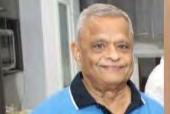

I am a retired person and like to sketch drawings of Lord Ganesh. I feel that celebrating the festival in Australia is important for the future generations. It is up to us to keep the tradition alive so that the youngsters don’t forget their roots.



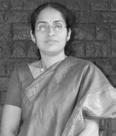
From traditional owners of the land to others newly arrived on these shores, the Himalayan Emporium Function Centre in Bankstown recently played host to a wonderful mélange of women. Together, they represented several faiths, and many more nations from around the world.



Beginning the evening as complete strangers, barriers were soon broken down as the three hundred and fi ty women formed new friendships. Over a sumptuous vegetarian meal spanning many cuisines, they examined life’s weighty issues and the more mundane ones, only to discover the many common threads and mutual interests. Cross-cultural dialogue thus became a powerful tool for peace building.
Now in its second year, Women of Diversity Dinner (WDD) not
only mirrored the changing fabric of contemporary Australian society but also celebrated the unique role women play in fostering relationships by countering fear, disapproval and violence.
Building on earlier successes with interfaith dialogues and Shared Table Project, WDD was conceived in 2015 by women from the NSW Jewish Board of Deputies. Prominent south Asian community group, SAHELI soon came on board with the aim of making mainstream connections and engaging with other migrant groups. Retaining core concepts of sharing food, stories and good times, the event has since reached out to all refugee, migrant and CALD groups in a bid to build muchneeded socio-economic bridges.
The coalition of like-mined women now includes the Australia South Sea IslandersPort Jackson, the Ethnic Communities Council of NSW, the Muslim Women’s National Network of Australia, Settlement Services International, Church of Jesus Christ of Latter-Day Saints and the Uniting Church in Australia NSW-ACT.
In fact, representatives from participating organisations were recently
involved in the pilot “We are all Sydney” leadership programme.
The initiative has been passionately espoused by community leaders Judy Singer, Aunty Shireen Malamoo, Gael Kennedy and Emelda Davis Karen Stagg, Shanta Viswanthan, Shanti Raman and Mala Mehta.
ABC Radio host Dr Rachael Kohn shared deeply personal insights on the power of faith and role of story-telling.
“Women of Diversity isn’t just about an annual dinner – it’s about bringing women together to develop themselves and their communities for the greater good of Sydney,” Board of Deputies Community Relations and Policy Manager Lynda BenMenashe stated.






“Bringing people together in myriad forums to strengthen the fabric of our society is our core business. We eat together, talk together, find out what we care a out collecti ely and then fight for those things. Eventually, we stand together in coalitions like the 31-member Keep NSW Safe group to pressure our government to strengthen the law against racist incitement, including against the
Jewish community,” she added.
“Half of the gathering,” she explained “has newly arrived women from the Middle ast, many o them hristians fleeing persecution, sexual slavery and genocide. Some have been victims of kidnapping; one was lucky enough to redeem her kidnapped son by paying a huge ransom. A large number have husbands, sons and other family members currently trapped in besieged cities in Syria and Iraq.”
“But (on this occasion) they danced, sang and cried to a program including Ruth Fessaha’s poetry and that of Somali Muslim refugee Hani Abdile, the music of Dalia Dior and Judy Campbell’s Community of Choirs, a troupe of Punjabi giddha dancers, inspirational words from Indian lawyer Mittu Gopalan and a belly dancer with a live snake,” Ben-Menashe noted.
Ruth Fessaha’s poignant words summed up the grit and determination of these brave women.
She failed, yet she got back up She lost everything, only to gain it back. She struggled to cope, yet she found peace. She had little, yet cared for others’ needs.













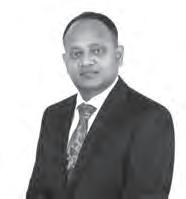
Recently, a friend and I have been seeking and sharing published accounts of stories from the era of India’s partition in 1947. We often message each other electronic links to blogs, write-ups, book excerpts and podcasts chronicling the accounts of those who witnessed and survived the horrors of the events of Partition. These stories are often deftly narrated, using words that seldom fail to arouse an array of profound emotions. They make you empathise with the turmoil and tragedy faced by an entire generation that suffered loss and displacement. They make you applaud their resilience to resurrect their lives from the ruins of adversity.
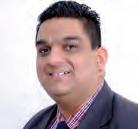

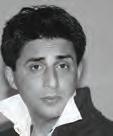
However, as post-Independence India turned 70 this year, this ageing milestone threatens to deprive the coming generations of several first-hand accounts of the struggle for freedom as the generation that lived through those times turns frail with age and begin to leave us.
India’s Independence in 1947 was as sombre as it was jubilant. The chimes of impending freedom brought with them unparalleled savagery as the country was torn asunder into two, leading to the birth of Pakistan. A freshly independent India and newly christened Pakistan, both endured a callous beginning - a beginning dripped in loot and bloodshed of the highest order. By the time both stopped to catch a breath and take stock of their newfound freedom, thousands had been butchered in cold blood across the newly etched borders, during what is often stated as one of the biggest human displacements in modern human history.
Not long after the borders had been fenced and the blood wiped off the divided land, India and Pakistan had turned into two hostile neighbours, destined to be foes for an eternity.
Tales of Partition are often gruesome, laced with plunder and violence of barbaric proportions. They talk about human
misery and utter helplessness while being slaughtered by their own kind. They talk about widows, orphans and the dead – all in multitudes. Time, they say is the best healer, yet the agony and the hurt in the eyes and in the voice of those who had endured these horrendous times hasn’t faded over the years. Each time they narrate their stories, their eyes well up as they revisit the horror inflicted upon them through no fault of theirs. Scattered amongst these stories of tragedy and misfortune are accounts of goodness, camaraderie and brotherhood.
Ordinary citizens who risked their life and limb to protect others from rioting mobs during those dark days. Orphans being adopted and raised by families in both India and Pakistan. Heart-warming stories of siblings and families, who were separated during partition only to be re-united years later. The heartbreak of those unlucky ones who live on, having never seen a loved one since they parted ways then, still hopeful of being reunited with them some day. Tales of childhood friendships cut short as they fell on different sides of the newly etched border in 1947.
Countries are political creatures, born out of the desires of men and women who crave kingdoms. India and Pakistan are no different in their origins. The monarchs always tell tales of glory and triumph. It is not until you have heard the testimonies of ordinary men and women subjected to ruthless regimes that you can carve a true depiction of those times. These Partition memoirs of ordinary folk in both India and Pakistan reveal the real impact of the events of 1947. They are timid enough to break down while recounting the horrors of events, yet they are brave enough to rebuke those who were trusted to safeguard citizens, and failed to do so. They are dripped in a perpetual nostalgia of an era that will never return, yet they are ghastly reminders against such bloodshed in future. 70 years on, as the real heroes of these stories grow old and feeble, it is up to the rest of us to hold on to their legacy. It is up to us to safeguard their stories and pass them on to the next generation for whom India’s Independence will be a mere academic milestone.
So, let’s all dig out these tales of partition and use them as a beacon to usher in India’s next generation.
TIA SINGH Young Journalist of the Year
Indian Link’s Tia Singh brings home the honours at the NSW Premier’s Multicultural Media Awards 2017



BY
RAJNI
ANAND
LUTHRA
Huge congratulations to Indian Link contributor Tia Singh who took the Young Journalist of the Year honour at the NSW Premier’s Multicultural Media Awards 2017.
Tia received the award from the Minister for Multiculturalism Ray Williams at a ceremony on 30 August.
Tia’s work at Indian Link has straddled many genres: literature, Sikh history, entertainment. Yet, it was her work on gender equality and domestic violence that stood out this past year.
As the community reeled under the shock news of yet another case of horrific domestic abuse - this time in a high-profile Sydney family - Tia vented her frustration in a piece that was widely read and shared. (‘An open letter to my fellow Indian-Australian youth on violence against women,’ Indian Link August-1 pg 39).


Her work reflects the need for diverse voices to be heard in our media landscape, just as much as it does for community youth to tell their stories - whether they are of dancing the bhangra in gay abandon, or angsting about growing up “different”, or even calling out the idiots amongst us who openly treat women as less than equals.
enabled it to resonate with so many people. Having been told that there was no space for her and her writing in the Canadian youth
“My connection with Indian Link has reiterated my flair for writing and voice the issues of my demographic,” Tia observed.
Tia, 24, began her association with Indian Link in 2015. Her first appearance on our pages, though, was way back in 2010, and on our cover, no less. It is an edition that her mum has preserved carefully, even displaying it at the family home’s formal room. (Tia was one of the HSC high achievers we profiled that year.)
It is quite clear that family support has been a huge deal for this up and coming youngster.
“I owe a lot to my mum; her belief in me has been unwavering,” she said. “But I dedicate my award to my grandad, my Nanu, who we lost six months ago. As a lover of the arts - he was a poet and a photographer - he encouraged my creative endeavours ever since I was a child, especially to write.
‘‘ ‘‘
(Tia’s) work reflects the need for diverse voices to be heard in our media landscape, just as much as it does for community youth to tell their stories

concerning how the jokes regarding violence against women come so naturally. It has happened with me: sitting in a group of friends, banter flying here and there, when in response to a joke I made, a generally warm-hearted male friend retorted Mein jooti laava?” (“Should I take off my shoe?”) Do we really find jokes that demean one sex to elevate another, funny? We seem convinced that domestic violence cannot and will not happen to us or our peers. We are educated, we are independent, we live NATIONAL EDITION
‘My heart aches for sisters…’ so Rupi Kaur writes for their pain BY TIA SINGH I didn’t do it in the traditional way… I didn’t smash the gate, I just created a whole different gate
Kaur was articulate and spoke confidently, warmly and openly answering questions posed by host Sara Mansour, and reading to the audience from her bestselling book. Towards the end of the “In-Conversation” session, Kaur laughingly told her fans that “this is the most I’ve shared in an interview!” An acclaimed poet, 24-year-old Kaur initially appealed to Generation Y as an ‘Insta-poet.’ She took to social media platform Instagram to post her photography and her poetry about issues that she felt passionately about – a step that has now amassed to a 1.3 million strong following. Writing about women’s experience, Kaur taps
women like Nikita Chawla, whose husband took a meat cleaver to her head, and Deepshikha Godara, whose intervention order against her estranged husband ran out four days prior to her murder. It starts with one misogynistic joke, one aggressive comment, one remark demeaning women. It is common to joke at the expense of women: we hear it in our songs, we see it in our movies, but just because it is common in our society, it does not make it okay. The Australian government recently launched an anti-domestic violence ad campaign, “Stop it from the Start”. I am all for a bit of banter, but it is On violence against women An open letter to my fellow Indian-Australian youth: When it comes to domestic violence, it should be a deeper conversation than “If he hits me, I’ll just hit him back…” BY TIA SINGH JUNE (1) 2017 15
Discovering her selves Breaking barriers, one poem at a time In a sold-out session, new age poet Rupi Kaur sat down in front of an audience of over 200 as part of the Sydney Writers’ Festival, to talk about her work and her journey. Kaur is a Canadian- Indian poet, spoken-word artist and visual artist, whose collection of poetry Milk and Honey has sold over 1.4 million copies worldwide. Half expecting to see a room full of young Indian women, it was refreshing and inspiring to see the auditorium brimming with young women - and men - of all cultures, clutching their copies of Milk and Honey. It is a testament to her role in inspiring the younger generation to fall back in love with poetry.

into what may be considered ‘taboo’ subjects such as menstruation, abuse, and sex, as well as love, loss and survival. our backs tell stories no books have the spine to carry “I wanted to give a voice to women’s experience, not just my own, but my lineage, ‘‘ ‘‘
and women in general,” she said. “I wanted to give a voice to trauma.” She went on, “Writing is deeply cathartic. Studies have shown it has the ability to heal physical wounds, so imagine how powerful it is for mental or emotional trauma.” Kaur said that growing up, she was a “fly on the wall,” and posting to social media was a “way of expressing [herself] almost silently.” She claims she accidentally fell in to writing, after reading the works of poets like Khalil Gibran. “I felt seen for the first time, and this was through other people’s words,” she said. It is apparent that the same sensitivity in her own poetry has Photos: Prudence Upton
He kept cutouts of every single article of mine. I wish he was here to see me win the award.”
Congratulating her, CEO Pawan Luthra said, “Tia’s knack for finding leads and seeing them through to conclusion is commendable. She has also impressed with her infectious enthusiasm, goodnatured vivacity and ready smile.

I congratulate her on behalf of the Indian Link family and wish her
literary sphere, Kaur decided to self- publishing in 2014. “I never paid any mind to those who said I did not fit the mould. I didn’t do it in the traditional way… I didn’t smash the gate, I just created a whole different gate,” she told her smitten fans. Milk and Honey was later rereleased by Andrews McMeel Publishing, and it became New York Times bestseller. Kaur moved to Canada with her family at age 5. Unable to speak English at the time, she began to paint. An ode to her humble beginnings, all the illustrations in Milk and Honey are Kaur’s own. Kaur is currently editing her second book and touring the world, speaking about her journey and meeting fans She credits her success to her dedication to the art, and the unaffectedness in her work. “I wasn’t born a great poet,” she said. “It took discipline and hard work.”
all the best.”
At Indian Link, we are proud to be able to provide a platform for emerging talent. This latest award marks our third for young journalists, following Ritam Mitra (2014) and Namita Gohil (2016).
 BY CHITRA SUDARSHAN
BY CHITRA SUDARSHAN
1971: A Global History of the Creation of Bangladesh by Srinath Raghavan. Harvard University Press, 2013

The Blood Telegram: Nixon, Kissinger and a Forgotten Genocide by Gary Bass. Vintage, 2013

The Cruel Birth of Bangladesh by Archer Blood. University Press Ltd, 2002

Srinath Raghavan, in his book 1971: A Global History of the Creation of Bangladesh, chronicles in great detail the way the crisis in East Pakistan unfolded, and the global politics that shaped the way India responded to it. The timeline of the crisis is something most of us are familiar with:
Awami League of Mujibur Rehman wins 160 of the 162 seats in East Pakistan in the 1970 elections, yet Yahya Khan and Zulfikar Ali Bhutto collude to keep the Awami League out of government; Mujib offers a compromise: a 6-point programme that would give some autonomy for East Pakistan without breaking up with Pakistan. However, Pakistan proved inept at handling
the crisis, and a combination of severe crackdown by the army and racist attitudes towards Bengalis, precipitated a crisis and the beginning of a secessionist movement. On March 25 1971, the Pakistan army launched ‘Operation Searchlight’ to halt East Pakistan’s independence movement.
What scholar Srinath Raghavan offers are fresh insights on the 14-day war that led to the creation of Bangladesh. Raghavan went through the copious PN Haksar papers archived at the Nehru Memorial Museum and Library in New Delhi and brings to light some surprising facts about the war that was probably India’s finest military moment. Haksar was both a diplomat and adviser to Indira Gandhi. One of the revelations is that Indian military and security planners had not initially really aimed or planned for a ‘complete victory’ in East Pakistan - a fact confirmed recently by JFR Jacob, the chief of staff of the Eastern Command at that time. Indeed, the initial plan was quite modest: to capture a part of East Pakistan, just enough so that a state of Bangladesh could be created. It was only well into the 14-day war that the capture of Dhaka became an objective.

Second, the author also reveals how Delhi quietly sought and got arms from Tel Aviv as it prepared to go to war with Pakistan in 1971. Raghavan’s research reveals that India’s ambassador to France, D N Chatterjee, began the process of acquiring Israeli arms in July 6, 1971.
Gandhi immediately accepted the proposal and, through the country’s external intelligence agency RAW, began the
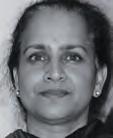
process of procuring arms through the tiny principality of Liechtenstein. Diplomatic ties with Israel, however, were only established in 1992 when PV Narasimha Rao became the Indian Prime Minister.
Other revelations in the book include a secret agreement between Iran and Pakistan for air cover for Karachi in case of an Indian attack. But the Shah of Iran reneged on the agreement, fearing retaliation from the Soviet Union.
Finally, the US move to send in the seventh fleet to the Bay of Bengal to “intimidate” India proved counter-productive. As soon as the American ships began moving towards South Asia, India decided to step up the offensive and para-dropped troops into Tangail to make a dash for Dhaka. As the capital fell, India forced a surrender before any international power could intervene. What this book has also unearthed is Kissinger’s duplicitous attempts to rope in China - through the Chinese ambassador Huang Hua - in support of Pakistan, to thwart India’s endeavours. While Gandhi was concerned about Chinese intervention, the then charge de affairs of the Indian embassy in Beijing, Brajesh Mishra (who would go on to be the national security adviser in the Vajpayee government), sent an authoritative assessment that China would stay out of the war.
This book is a must-read for any history buff interested in geo-politics of the subcontinent, and the 1971 war in particular. It is a superb
Indian military and security planners had not initially really aimed or planned for a ‘complete victory’ in East Pakistan
piece of scholarship. Srinath Raghavan graduated from Madras University, and spent six years as an infantry officer in the Indian Army. He later completed a PhD in War Studies from King’s College London and was a Senior Fellow at the Centre for Policy Research, New Delhi. His other publications include War and Peace in Modern India: A Strategic History of the Nehru Years (2010) and India’s War: The Making of Modern South Asia, 1939-1945 (2016), as well as several co-edited volumes. Raghavan is a regular commentator on international and strategic affairs.

The second book is by Princeton University Professor of Politics and International Relations, Gary Bass, called The Blood Telegram: Nixon, Kissinger and a Forgotten Genocide - based on the series of telegrams that Archer Blood, the American Consul General in Dhaka sent to Washingtonhence the eponymous title. Gary Bass’s book recounts this terrible and little-known story (outside the subcontinent) of the 1971 war
that led to the birth of Bangladesh, and the sordid and disgraceful role that Washington played in the crisis. One truly good and heroic American figure emerges from the morass, and it is Archer Blood. Throughout the crisis, Blood risked and even sacrificed his career by refusing to buckle under White House pressure, and continued to tell the truth about what was happening on the ground - and the pogrom unleashed by the Pakistan Army.
Bass’s focus is on US conduct at the time: he recalls how Nixon was obsessed about opening a channel to China which he thought would help US extricate itself from Vietnam, as well as strike a blow to the Soviet Union, its Cold War rival, by exploiting their growing schism and rivalry with China. Pakistan - and its military dictator Yahya Khan - became Nixon’s secret liaison with the Chinese leadership, helping to lay the groundwork for Kissinger’s, and later Nixon’s, visit to China.
In practice, this meant that Yahya Khan suddenly became indispensable to the US - and free to do what he pleased in East Pakistan, while the White House averted its eyes. 300,000 Bengalis - mostly Hindus - were killed by the Pakistani Army, and 10 million refugees fled to India. Nixon and Kissinger spurned the cables sent by their own diplomat in Dhaka that highlighted the massacre and used the word ‘selective genocide’ that targeted Hindus; and by failing to restrain West Pakistan, they let a bloodbath unfold. The book shocks the reader with the conduct of, and vulgar language used by, the duplicitous Washington duo, as can be seen from the extensive quotes from the secret White House tapes that Bass deploys.

Finally, The Cruel Birth of Bangladesh, is an account of the birth of Bangladesh as seen through Archer Blood’s eyes himself. Blood glorifies the independence struggle and reflects a deep commitment to freedom by the author. Blood had to wait until 1998 for the State Department to declassify the documents pertaining to the events of 1971 before he wrote this book. It is both intensely personal as well as a serious account of the crisis. Blood, along with 20 of his consular staff, despatched a cable expressing their ‘dissent from US policy toward East Pakistan’ and riled against their government for failing to stop the killings. Blood was unceremoniously removed from Dhaka 18 months before his tenue was to end, and placed in an obscure section in the State Department. Thirty-three years later, when he died, the news of his death was in the front pages of all Bangladeshi newspapers and his family was overwhelmed by the
spontaneous expressions of grief from that country.
Nixon and Kissinger had every right to pursue US national interests and they did change the course of history: the world has not quite acknowledged, however, that it came at a price, the lives of hundreds of thousands of Bangladeshis.
Nixon and Kissinger spurned the cables sent by their own diplomat in Dhaka that highlighted the massacre
‘‘
Australian basketball fans are set to cheer on a former Indian captain as well as Team India’s current skipper, after a pair of historic signings by NBL clubs Adelaide 36ers and Sydney Kings. While the 36ers have, in conjunction with the Dream Basketball Academy, signed former Indian captain Vishesh Bhriguvanshi on a one-year training contract, Indian skipper Amritpal Singh has been selected as a member of the 11-man Sydney Kings squad, after his impressive recent outing with the Sydney Kings Invitational Team in China. The duo are the first Indian players ever signed by an Australian basketball outfit, forming part of a move by both clubs to build up their respective fan bases in the Indian community, both domestically and abroad. Indian Link recently caught up with Vishesh and Amritpal to hear their thoughts ahead of a historic summer of basketball.

Standing at 7’0” and 116 kilograms, it’s easy to assume that Singh was born to play basketball; but it’s a relatively new foray for the 26 year-old, whose humble beginnings cast his meteoric rise in even more an astonishing light. Born to a family of humble vegetable farmers, Singh grew up helping his father plough rice fields in Ganna Pind, a small rural village in Punjab with just over 2000 inhabitants. More than 10 km away from the nearest train station, Singh - a kabaddi player who didn’t know what basketball was until the age of 18 - seemed destined to follow in his father’s agricultural footsteps. But after being introduced to basketball by his uncle in 2009, the towering center found himself representing India at the Asian basketball championships just two years later at the age of 20, and is now one of the most prolific and dangerous basketballers in the region.
Sydney Kings Head Coach, and Australian basketball legend Andrew Gaze, spoke glowingly of Singh’s pedigree.
“Amritpal was a very strong contributor to the Kings off-season program, particularly during our invitational tour to China,” said Gaze. “His rebounding was a major factor that allowed us to win the Suzhou event, and he also picked up our overall playing
philosophies and schemes quite quickly,” Gaze said.
Amritpal himself was modest. “Playing with the Sydney Kings, my game will improve more,” he said. “I’m very excited because it’s a big opportunity for me and a lot of Indian basketball players are looking up to me. I want to do my best in my first season with the Kings and I hope the Indians will support me and the team”.
One man who knows Singh better than most is his India teammate, Vishesh Bhriguvanshi. “It’s a big thing that (Singh) got selected for the Kings,” says Bhriguvanshi. “He performed very well in the China invitational tournament. He’s a nice guy and a good player. He’s one of the big 3 in the Indian national team, and it’s definitely great that he’ll play in Australiahe’ll learn so many things and he’ll help the national team more.” It’s a sentiment Singh reciprocates, noting fondly the time he and Bhriguvanshi have spent playing together in the domestic club scene.
Bhriguvanshi’s journey to the top is no less remarkable: at a relatively slight (by basketball’s standards) 6’4”, the 25-year-old shooting guard from Varanasi first started playing basketball with his elder brother at the age of 12. Within a year, he was

representing his district and state; by 17, he was already a member of the national side; and by 19, Bhriguvanshi was named captain of the Indian team. Having been born to a lecturer and a school principal, Bhriguvanshi’s future, like Singh’s, could easily have been vastly different if not for a few quirks of fate.
Bhriguvanshi was initially introduced to the 36ers by the Dream Basketball Academy, which is designed to allow young, elite basketballers to transition from high school to the NBL and ultimately to the NBA, under the guidance of some of the best coaches and trainers in the business, including Dream Academy managing director and co-founder Raheim Brown, a former professional basketballer with experience in several premier basketball leagues around the world. Brown’s biggest success story with the Dream Academy to date is the development of US sensation Terrance Ferguson, who in 2016 skipped the traditional college pathway to the NBA, instead opting to spend a year with the Dream Academy and the 36ers, before being picked up by the Oklahoma Thunder in the 2017 NBA draft.
Speaking about his journey to Australia and his upcoming time at the Dream
Academy, Bhriguvanshi is not short of excitement. “The NBL is one of the world’s biggest leagues after the NBA,” he said. “Every player has a dream to play for a reputed league some day, and so it was my dream. Representing the nation is very different feeling, and I am definitely proud of that, but playing in a league like this has always been my dream and that is what keeps me motivated.”

“It means a lot because I’ll come to learn so many new things and Raheim will train me,” he added. “It’s a really big thing for me and it was very big news (in India). I was like, ‘Really?’, and Raheim said, ‘Definitely, we’ll train you the same way we trained Terrance and try to get you in the NBA’. I’ll try to give it my 100% - every basketball player’s dream is to play in the NBA, and especially coming from a country like India, it’s a very big dream for me.”
Both the 36ers and the Kings are intent on growing the fledgling relationship between their clubs and fans within the Indian community. Sydney Kings Managing Director Jeff Van Groningen noted the significance of Singh’s signing, saying “We take our responsibility as a member of the global basketball community very seriously and endorse the NBL’s focus on ‘bridgebuilding’ with those that share an interest and passion for our great game both in India and within the Indian community here in Australia. We are excited at what Amritpal can contribute to the Kings as a strong, rebounding big man and we look forward to contributing to his rising career.”


The Dream Academy, meanwhile, is also excited to share Australian and Indian cultures with Bhriguvanshi, noting its ultimate goal of putting Bhriguvanshi through a workout in front of NBA teams or the NBA development league. “With his competitive spirit and style of play on the court and his humble but strong personality off the court, he is a great addition for us,” Brown said. “We look forward to this new relationship, not only with Vishesh, but with the whole of India. He will represent the Dream Academy and the Adelaide 36ers proudly for his country and himself.”

Representing the nation is a very different feeling, and I am proud of that, but playing in a league like this has always been my dream Vishesh Bhriguvanshi(Facing page) Basketball great Andrew Gaze welcomes Amritpal Singh to the Sydney Kings. (Left) Vishesh Bhriguvanshi of the Adelaide 36ers. (Below) Amritpal Singh in action
KHUSHAAL VYAS on the latest in the AFL

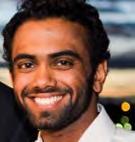
It’s finally here. September has arrived and Sydney has both teams in the finals! This week we focus intensely on the road ahead for the Sydney Swans and GWS Giants.
Swans: What’s next?
Whilst the Swans may be on the lower half of the top eight teams on the ladder, they are the team to beat. After losing their first six games of the season, the only team that has managed to beat them since has been Hawthorn. Hawthorn did not make the top eight. I’m no mathematician, but if only the Hawks can beat the Swans and the Hawks are not in contention, does that mean Swans
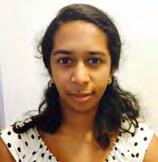
= Premiership favourites? Perhaps so. But Finals football is a whole new ball game. The intensity is at peak level with everything to play for. They play the Essendon Bombers on Saturday who they only beat by 1 point last time they played.
TIP: The Swans are too good to ignore. Whilst the Bombers have had an exciting season, Sydney’s forwards are in form and are the best team defensively in the competition. I’ve loved watching the Bombers this year, but Saturday at the SCG should end their gallant season.
Giants: What’s next?
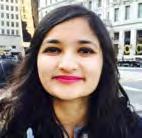
The Giants go to Adelaide to play the firstplaced Crows. The Giants have been strong throughout the season but have had some inconsistent performances resulting in surprising losses and heart-stopping wins. The Crows boast one of the best forward lines in the competition. Whilst defenders such as Heath Shaw have some great experience, his troop of defenders will need to play out of their skins to stop a Crows onslaught.
TIP: The Crows should win this one at home. It means the Giants would need to play the victor of Sydney vs Essendon to stay in the competition.
SYDNEY
Lance Franklin The leading goal scorer in the competition, he kicked a mammoth 10 goals last week against Carlton.

Josh Kennedy Sydney’s Captain Courageous and one of the all-time greats in the midfield, he’s fast, quick, accurate and always on the ball.
Anthony McDonald-Tipungwuti
This guy has become an absolute cult sensation in the AFL. He tackles hard, he’s fast, scores goals and brings the intensity that Essendon will need in order to have a chance to topple the Swans.
Joe Daniher The man with the mo’. A gun forward with a knack of kicking massive goals when his team needs him to. Swans defenders will need to bring their best to stop him.
Jonathon Patton He’s proven himself to be a trust mark of the football and ice-cool in front of goal
Khushaal Vyas 130 Bhai* 128 Tanya Sinha 125 Margit Shah 125 Smit Bhatt 108 Adelaide Crows v GWS Giants Crows Crows Giants Crows Giants
Geelong Cats v Richmond Tigers
Cats Tigers Tigers Cats Tigers
Sydney Swans v Essendon Bomberss Swans Swans Swans Swans Bombers
Port Adelaide Power vs West Coast Eagles
Power Eagles Power Eagles Eagles
* The mysterious brother of mine you’ve heard so much about in these articles. He’s the one to beat!
Dylan Shiel One of the fastest and most efficient midfielders in the competition. When he plays well, the Giants play well.

Eddie Betts The best small forward in the competition. He is quick and is known for kicking goals from any angle.
Taylor ‘Tex’ Walker The leader of the Crows and a goal kicking machine. He’s tough, he’s accurate and he’s damn good.

- Admission in Australian Colleges and Universities
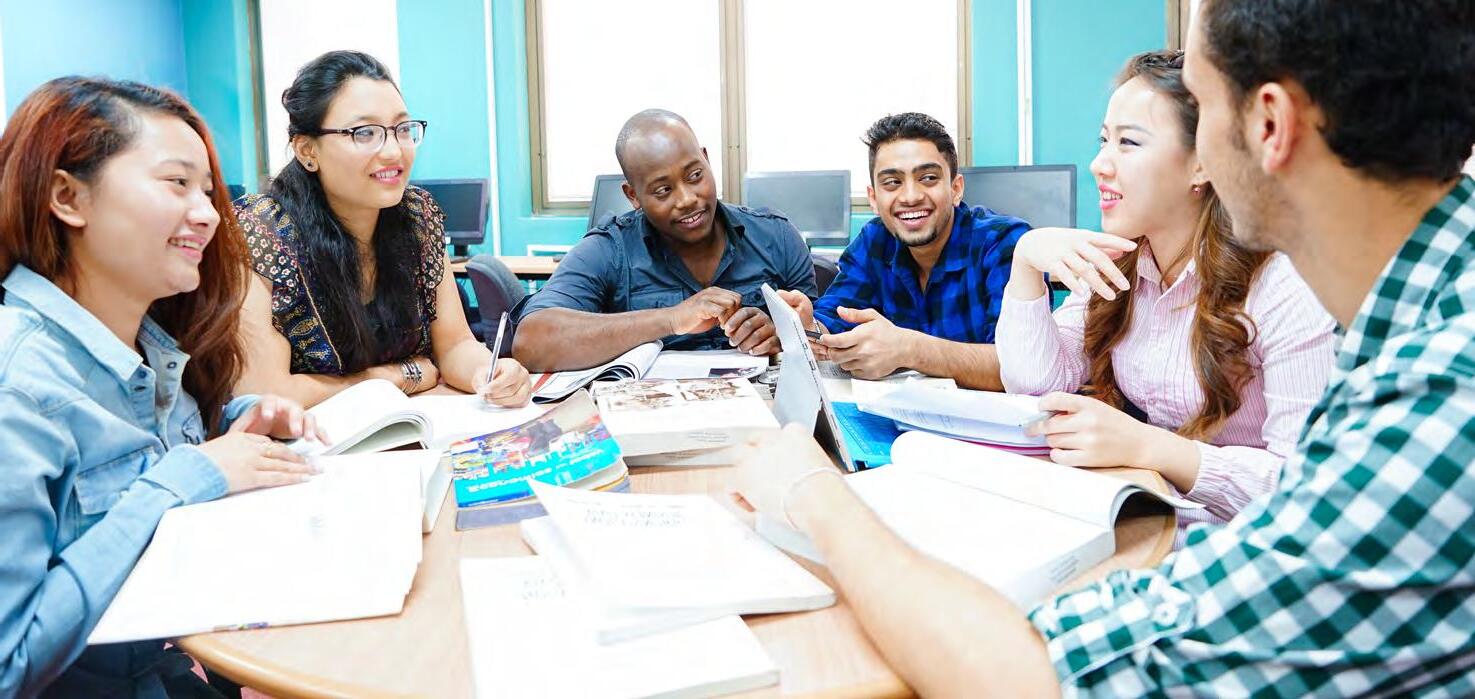
- AAT Review Procedures in Australia



We also specialise in: - Home and commercial Loans (MFAA Certified) - International Money Transfer



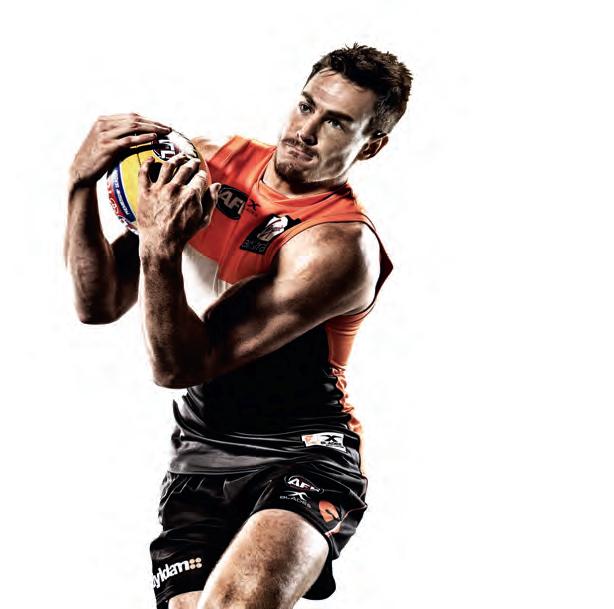
 BY MINAL KHONA
BY MINAL KHONA


Everyone knows about the mood swings and the hot flashes that we women go through during menopause. But, under all the drama of the physical symptoms, we forget to pay attention to the changes our skin and hair go through at this time. Here is a rundown on how you can look after them while the hormones play havoc with the rest of you.
Ever since my menopause started I noticed that my hair was falling way more than before. It has always been a problem but it seemed to get worse. If I didn’t use my night cream or the Ayurvedic skin oil (more about that in another article), I found my skin feeling drier than before. So I decided to read up and do something about it. And share it with my readers.
When you are peri-menopausal, you might find your hair strands feeling thinner; and hair falling more often. Even if you have never had acne before, your skin might suddenly break out. Or the skin, on other parts of the body too, might feel dry and itchy. The hormonal changes our bodies go through at this stage are the reason behind these, and with all the other physical and emotional changes, these changes are easy to overlook.
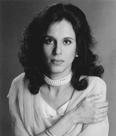

• Besides the natural ageing our skin goes through as we get older, menopause is known to give you problems you might not have had before. Worse, it can even accelerate the ageing process by changing the appearance of your skin.
• Fine lines and wrinkles are caused due to the gradual decrease of collagen and elastin in the skin. During menopause, the levels of the hormone oestrogen also reduce in our bodies and this can speed up the appearance of wrinkles and make the skin sag and look dull.
• The skin also feels dry at this time and that is because blood flow to the face, which provides nutrition, also reduces, leading to water loss from the deeper layers of the skin. This makes the skin look dry and feel itchy.
• A good night cream that contains Vitamin A, will help a good deal. A day cream with SPF is vital to prevent further damage. If you can afford them, pick up a high end face cream that is made for women in this age group which, with regular use, can make the skin look nourished and plumped up, as it evens out the fine lines and wrinkles.
• You might get frustrated if you see your skin breaking out at this age, especially if you have never had teenage acne. For damage control, use cleansers that help reduce the excess oil on a regular basis. You can also try pimple and acne clearing creams that you can apply on the affected spots only. Don’t spread all over the skin because they will further dry out your skin. However, if you have oily skin and you are getting acne, use a gentle cleanser and face masks for oily skins.
• To combat the dryness, don’t take very hot showers, no matter how cold it is outside. You can use a cream that has some essential oil in it and these days, with people looking for natural products, many brands are using naturally hydrating ingredients like coconut oil, shea butter or even hyaluronic acid.
• As mentioned above, a day cream with high SPF is extremely important during this time because the very oestrogen
that is reducing during menopause also produces melanin, which is instrumental in protecting the skin from the UV rays of the sun. So, no stepping out without strong sun protection.
• Unfortunately, this hormonal shift during menopause can also give rise to unwanted facial hair, even if you have never ever had that problem. This
and upper lip. Some women even find hair growing under the ears and just in front of them. The worst are those single thick strands that appear on the chin and have to be plucked out with tweezers. Waxing or regular threading are the safest way to remove these. If you have tried laser hair removal techniques and they have worked for you, then you


Every time I go to the snows, I feel compelled to roll down the slopes and break into song and dance. It has to be the diet of Bollywood films I was raised on.
Bollywood, with its penchant for filmy romance in the Swiss Alps and valleys of Kashmir, is responsible for many sappy sentiments attached to the snow, including mine.
So it’s great news that the hills came alive with the sound of (Bollywood) music at Mount Baw Baw, Melbourne’s closest downhill ski resort, with their upcoming Bollywood at Baw Baw event on 9 and 10 September.
Expect vibrancy and colours as the entire village gets decked up with the desi theme. The organisers are going all out with henna artists, DJ, dhol, Indian food and the quintessential Bollywood dance and workshop. So, plenty of fix-the-lightbulb and pat-the-dog movements to look forward to!
Speaking of patting dogs, the time we spent getting up, close and playful with the howling huskies was by far the most exciting part of our trip at Mt Baw Baw. We were there, not too long ago, taking a much-needed break from a ‘headless chook-like existence.’ Getting there is easy: it’s a beautiful two-and-a-half-hour drive to the alpine village situated at the Southern
boundary of the Victorian Alps. Escaping into the white silence was the best thing we could have done for our sanity.
We got up to a lot of fun and a little mischief but our most memorable time was spent getting acquainted with the dog sled team before they whisked us away to experience the jaw-dropping snowy vistas.
We had the pleasure of meeting musher Rob who took us around on a Sherpa snowmobile and introduced us to the canine inhabitants of Baw Baw. Zara, Sarabi, Dee, Jack and Casper, each of the dogs loved the affection given to them as they rested in between the rides.
Named after the Mt Baw Baw Dog Sled Dash, the Howling Huskys tour is a dash around the Latrobe trail with an experienced musher and a team of huskies. The team took us through the labyrinth of snow gums in the backcountry of Baw Baw, giving us an opportunity to enjoy alpine beauty at its best.
According to Rob, many of the dogs are rescued and Baw Baw becomes their new caring family and home. We got to know the smart ones from the cheeky ones as we patted and cuddled them. It was a delightful trip with plenty of photo opportunities of the majestic mountains and the friendly animals.
Everything is within a few minutes’ reach in this intimate snow village. It took us no time to hire our snow gear from Mount Baw Baw Ski Hire and grab a deliciously welcoming hot meal at the Village restaurant before we hit the ski slopes.

The weather was perfect for some cross country skiing. It snowed through the whole time we were there and it was an amazing experience for city slickers like us
to savour the fresh mountain air and tread on soft alpine snow.
With five lifts to choose from that open up over 30 hectares of mixed terrain, we decided to try our hand at the winter sport. With boots, poles, skis, goggles et al, we found ourselves on the beginners slope and, given our lack of skiing finesse, stayed there.
As the snow continued to fall softly and endlessly to the ground, the dark contrast between the earth and the sky converted the landscape into a monochrome. Our bright ski gear was the only indication that the world was not really black and white.
Later on, ensconced in the warmth of our very well maintained Snowgum Apartment, we pored over photos of our hilarious ski bloopers in between sipping some wonderfully aged port.
With Frosti Frog Hollow Toboggan run just outside our centrally located apartment, we had a tough time getting our son to come back in as he was having so much fun tobogganing down the slope. It was an uphill task though to climb back with the toboggan and he left only when it got too tiring.
With food and facilities so easily accessible, we appreciated the close knit
village even more. The menu offerings at most food joints are not gourmet but there is plenty to tuck into.
The next day, we met a group of people who had travelled from Japan just to ski and stay at Baw Baw. “They are regulars,” said the friendly waitress at the Village restaurant, that’s aptly located in the heart of the village. “They come every year for a week and explore the mountains,” she added.
No doubt, there was a lot to be explored in the alpine environment and many activities to keep us occupied. We made snow angels, built a snowman, took a dip in the spa pool, and played laser skirmish amongst snow-covered trees and took snowshoe tours.
Interestingly, there were quite a lot of families from the Indian subcontinent visiting at the same time as me, though unfortunately I did not spot any Rishi Kapoors in Monte Carlo sweaters or any Sridevis in flimsy chiffon sarees.
Ashish, who came to Baw Baw with his wife Dipti, shared his experience at the charming destination. Romance, unsurprisingly, was high on their agenda.
“I am glad we made the decision to drive down and spend some quality time together here. It’s an exquisite setting for our third wedding anniversary, and reminded us of the Yashraj films where the hero would whisk his lady love to the lush settings of snow. It’s uber romantic,” said Ashish, dreamily.
Taking in the tranquil panorama with its views of powdery snowflakes falling noiselessly to the ground, I couldn’t help but agree.
Escaping into the white silence was the best thing we could have done for our sanity
Funreaches new highs at Melbourne’s closest downhill ski resort
















The wedding planning journey often begins with choosing the perfect venue. From their sweeping grand staircase and chandelier ballroom, to designer menus and award-winning hospitality, Stamford Plaza Sydney is quickly becoming a premier destination for traditional Indian weddings.
Located in Mascot in Sydney’s south, Stamford Plaza is an elegant and luxurious 5-star hotel offering an uncompromising level of personal service. The exquisite grand entrance offers an impressive welcome for wedding guests and is the ideal background for elegant wedding portraits.
The first floor of the hotel opens up to a spacious canapé reception area and the breathtakingly beautiful Mascot Ballroom. Accommodating up to 280 guests, Stamford Plaza’s Mascot Ballroom is the largest pillarless ballroom south of the city.

Banquets Manager Ashish Sharma believes that a memorable Indian wedding is dependent upon 3 key factors - experienced and attentive staff, an immaculately styled venue and dedicated chefs who create quality, authentic dishes. “We have hosted a number of Indian weddings and our clients are always thoroughly impressed by our unique event spaces, coordination and attention to detail.”
With a wealth of experience spanning 15 years and 3 countries, Executive Chef Santosh Kumar is renowned for his comprehensive knowledge of international


cuisine and creative approach to setting a memorable dining experience. Specialising in both southern and northern Indian cuisine, Stamford Plaza’s Kitchen Brigade led by Santosh has specially designed an Indian wedding menu using the highest quality local ingredients.
In addition, Stamford Plaza works tirelessly with Indian wedding stylist Nita of “Decor-AShaan” to ensure the decoration and theming is authentic right down to the smallest detail.
With a deep understanding of the cultural aspects involved in creating the perfect Indian wedding, Stamford Plaza Sydney has thoughtfully created two Indian wedding packages, the “Yuvraj” and the “Maharaja”. At a glimpse both packages include delicious Indian canapés and refreshments upon arrival, a traditional Indian style buffet menu, superior beverage package and luxury accommodation on the wedding night for the bride and groom. The Maharaja Package also features a red carpet welcome and thali service for the bridal party. Stamford Plaza’s dedicated wedding specialists can also tailor the wedding packages with a various enhancement options to create a more personalised occasion.
On Sunday 24 September, Stamford Plaza Sydney will be hosting a Free Indian Wedding Open Day. Guests will be able to see and experience the hotel’s Mascot Ballroom beautifully styled by DecorA-Shaan with a full mandap set up. The Wedding Open Day will also feature a henna artist, samples of Stamford Plaza’s specially designed Indian Wedding Menu; plus giveaways, discount booking offers and a complimentary gift bag to take home!


Stamford Plaza Sydney FREE Indian Wedding Open Day



Sunday 24 September 2017, 10-4pm


O’Riordan & Robey Street, Mascot
To register or find out more, visit: www.stamford.com.au/indianweddings
Complimentary secure, undercover parking is available for all guests.









Never married 1971-born (looks younger) Hindu Punjabi Brahmin, 5’4”, slim, vegetarian, family-oriented beautiful girl, currently visiting Sydney. Looking for well settled Australian Hindu match. Siblings are Australian citizens. Respond with photo and details on WhatsApp +61-412 733 796 or email at sheelam_pandit@yahoo.com.
Seeking suitable match for Australian citizen. Sydney-based, Sikh girl, 1991 born, 170cm, qualified chartered accountant, working for Australia’s leading bank. Parents highly educated and well settled in Sydney. Please respond to hs52216a@gmail.com
Seeking a professionally qualified, settled match for Sydney-based, never married Australian citizen. Hindu, Punjabi Khatri 44, 5’3” slim, fair, attractive girl. Postgraduate and working on a good position in government organisation. Please send details with photo indsyd2016@gmail.com
Seeking professional match for Australian born and brought up Hindu girl. Sociable and friendly, graphic designer, 26 years old, 5’7”. Family-well settled in Australia for 27 years. Please send details with photo to matrimonialaustralia2017@gmail.com
Looking for a suitable girl for a 25-year-old Gill Jatt Sikh boy living in Sydney. He has done B Com Professional from India and is currently pursuing MBA and MPA. Businessman father and homemaker mother, one sister married and living in Australia. The girl should be Australian PR or citizen only and preferably from Jatt Sikh family. Contact +919872037378, +919814037278, 0422183789

A well-settled, clean-shaven 48-year-old (looks only 35) good looking, tall, slim senior manager with one of the four major Australian banks from a Jat Sikh family is seeking a lady with a view to marriage. Citizen of Australia and USA, good natured, sociable with a blend of both Eastern and Western values. Caste and age no bar. Respond to seekerusa@mail.com


Ph
We provide professional preparation of all visa applications with detailed supporting submissions to enable streamlined processing. Our services included but are not limited to:
• General skilled migration and state sponsorship
• Employer Sponsored Temporary visa 457
• Employer Sponsored Permanent visa 186


• Regional Sponsored Migration Scheme(RSMS)
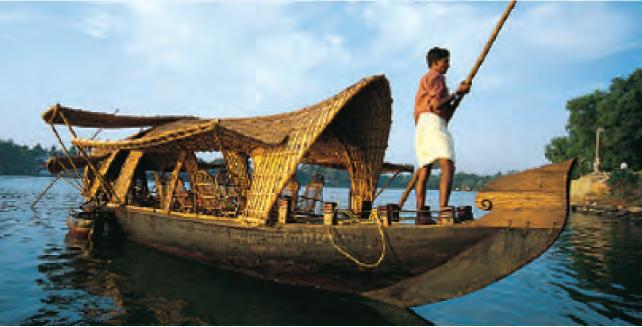
• Student visas and student’s dependent visa
• Family migration- Fiancé, spouse, parent, child
• Business Migration with State/Territory Sponsorship
Multi lingual staff:
• Hindu, Punjabi, Gujarati, Macedonian, Serbian, Bosnian, Croatian, Thai and Mandarin.
Address: Suite 2B, Level 13, 99 York Street, Sydney, NSW 2000 Phone 02 92998881 and 02 98915828
Email: Info@migrationcentre.com.au
Free Student Service: Free and quick admissions in all Australian and USA Institutions

• FREE change of Course and Institutions
• FREE RPL and credit exemption facilities available
• FREE Professional guidance to select a course or pathway
• Scholarships available in many institutions




• Flexible timetables for morning, afternoon, evening or weekend classes
• Friendly counsellors speaking your language
• FREE OSHC issue advice and quotes



September swirls in and here we are with our reading for you. Listen in to the melodious chimes of change heralded by the equinox and Jupiter’s journey into lovely Libra – it is a wonderful time to welcome the festive season of Navratri and celebrate the nine nights of the Goddess.










Wish upon a star and soon your wish will be granted! Trust your intuition for you know yours is the only way you wish to follow. Work engagements or outings with family, you will be in the lead for planning a major get-together. The Queen of Cups bears tidings of mirth and gaiety and with the card of The Star, beams to the world that you will be surrounded by love. And yes, Aries, you will be in stellar form!
LEO
July 21 - Aug 22
This will be a whirlwind month for you as it is ushered in by the Four of Cups. You will have guests! Your favourite friends and family members visiting you make it a very special September. Exciting times, breathless moments, heaps of good food, dancing and conversation keep you going. Then the Priestess card asks you if you need some me-time. This you gladly choose in the last week. For, by then, your dancing shoes are probably worn out, Leo!
SAGITTARIUS
Nov 22 - Dec 21
Your incomparable sunny spirit brightens up your place of work and neighbourhood. September sees you at the centre of a community gathering, bringing to balance multiple interests which only the blessed of Fortune can do. You can genuinely make things about the other person and become the world to them! Even as you are sought after for your ability to bring people together, look out for a special someone who might be waiting for you to glance their way, Sagittarius.
A sense of wonder and innocence urges you to explore something you may never have tried before. Adventure sports, baking or painting class - you are ready to make a splash, Taurus! With the Queen of Swords beckoning you to engage and expand your knowledge, you will be keen to go with the flow and let the challenge lead you. You may assess later how much you’ve benefitted, but for now you allow the experience to add up to awesome.
VIRGO
Aug 23 - Sep 22
Circumstances change and happily so. You’ve been waiting for this particular change for some time and it is happening now in your own month, Virgo. A career move, a new house or a new relationship brings you deep satisfaction for you have wished it, worked for it and deserve it. The Page of Coins bears news of an increased flow of money your way. An outstanding payment due to you or a surprise early cheque - celebrations are certainly in order!
CAPRICORN
Dec 22 - Jan 19
The card of Justice assures you of balance. Do you need to strike a balance between your work and personal life, Capricorn? Perhaps work and more work have figured high on your list of priorities. The Six of Swords still in your reading indicates that you are up there in the echelons of your work sphere and your place is secure. With patience, plan your path for the future where your spirit receives adequate nourishment, too. Retreat or weekend getaway?
GEMINI May 21 - June 20

Have you been trying to get a plan off the ground for some time now?
Perhaps a health concern or a financial matter has kept your mind occupied. It’s time to break the task at hand into small, practical bits and for that you’ll need to slow down, Gemini. Oh, your Mercury mind-wings are hard to curb! Yet, with the card of The Alchemist standing by you, tall and strong, you’ll turn base elements into noble with your impeccable touch.
LIBRA
Sep 23 - Oct 22
September is for cherishing each moment spent with loved ones. Family time for you, Libra, is sacred. You have an opportunity this month for a large get-together with cousins, nieces, nephews et al. The Sun shows that you radiate positivity and harmony especially towards the children in your extended family. Your sharp mind is aware of mild undercurrents but you bring things to a beautiful balance by prioritizing the bonds of love. And gain allies and fans in the family!
AQUARIUS
Jan 20 - Feb 18
Revel, Aquarius, for now you reap the reward for your work! The Two of Discs brings you recognition for your excellence but… are you already into your next project? You are used to juggling many hats and something of special allure is on its way – a subject close to your heart. The Devil beckons you to tread on unchartered waters so do not hesitate to incorporate new features, new people in your team. Nouveau ideas and you go together!
You love to learn, Cancer, from the wisdom gleaned from varied experience. You may be asked to share your wisdom this month. You will delve into your resource of myriad memories and in your inimitable style, generously benefit others. The Two of Wands encourages you to experiment and bring creativity to the projects you undertake - so whether it is a public lecture, research, writing or a usual workday that keeps you engaged, you will be appreciated for being unique.
SCORPIO

Oct 23 - Nov 21
Oh, Scorpio! You’ve been feeling hemmed in. You’re too nimble to not know what is restraining you. With The Chariot urging you to conquer, you can identify the cause and set about charting your course. Propelled by a knowledge of philosophy, literature and your own aspirations, you are headed in the direction of fulfillment and victory. The Ten of Coins brings you good news on the financial front and you end the month on top of the game as always!

Feb 19 - March 20
Sensitive Pisces, you have been so giving of your time of late that you feel spent. Treat yourself to a soothing, relaxing time with a bit of music, maybe a spot of gardening. This will help you get yourself back as you connect with the elements. Have faith in your creative and intellectual ideas. If you are uncertain about something new, still your fears and go in the direction of your goals for the card of Strength is with you.
space in the cluttered canvas to give the couple breathing, if not breeding, space. Their first (aborted) sexual encounter in a cramped MIG flat in Delhi with sounds of songs and everyday conversation seeping subtly into their activity is done in a lengthy flurry of furious foreplay signifying nothing. It’s a sequence filled with clumsy groping and slurpy smooching, played out with endearing honesty.
Another brilliantly written sequence of foiled passion has Sugandha trying to seduce Mudit at a picnic with a plunging neckline and groaning tips from an orgiastic song that goes “Come to me, Danny Boy”.
STARRING: Ayushmann Khurrana, Bhumi Pednekar
DIRECTOR: R.S. Prasanna
HHHHH
It’s okay if you can’t get it up. There. I said it. It’s taken Hindi cinema years and years to be liberated from the shackles of libidinous machismo. An actor called Ayushmann Khurrana has done it. He plays an ordinary guy with a routine problem with such conviction.
Ayushmann’s Mudit in Shubh Mangal Saavdhan suffers from performance anxiety whenever he tries to make out with his bride-to-be, played with spunk and spontaneity by Bhumi Pednekar who is rapidly emerging as the voice of the mofussil woman.
In many ways, Bhumi is the hero of this remarkable film that’s eventually bogged down by too many stereotypical characters associated with the smalltown joint families.You know them, quirky, cantankerous, eccentric, whimsical but cute and honest.
Bhumi’s Sugandha is one of the most sharply-written female heroes in recent films. Sugandha is deeply middleclass and proud of it. She resolves to marry the sexually dysfunctional (albeit temporarily so, but who knows!) Mudit not out of any false sense of bravado but because... well, this is the best she can get. And he is so goddamned devoted.
Once she makes up her mind to go with Mudit she will see her resolve to its logical (?) conclusion.
Screenwriter Hitesh Kewalya finds
STARRING: Siddharth Malhotra, Jacqueline Fernandez
DIRECTOR: Raj-DK
HHHHH
It’s not easy to make a smart sassy film with two airheaded non-actors in the lead. Co-directors Raj and DKA, known to perform miracles with stars (remember Tusshar Kapoor in Shor In The City?) do the near-impossible.
A Gentlemen is a suave, sexy pyramid of posh locations and peachy leads who know how to hold their sushis and Guccis in place without looking like ‘wannabes’. The film is a clever reworking of the doppelganger formula where the co-directors have cheekily manipulated the timeline in the narrative to make us think there are two Sidharth Malhotras in the plot.
Malhotra socks his punches and sucks on those over-painted lips like
a flee-market version of Tom Cruise. He even does a gay act in a bar with a government official (Chittranjan Tripathy, excellent) to get confidential information. But like many of the cleverly staged comic action sequences this one too overstays its welcome.
The actor is fully aware that this is his do-or-die attempt at Cruise control. Malhotra gives it his best shot - the gun or the tequila, take your pick. He gets to do two different looks. The assassin in Mumbai wears a grimace and the white collar worker in Miami wears a loopy grin.
Raj and DK’s direction is sharp and witty. The script seems original most of the time. The writing is sharp, sometimes a bit too clever. The narrative tends to trip over its own smartness. This happens more than once and after a while the storytelling tires us out with its indefatigable energy-boosted antics.
Danny Boy’s reactions of smothered frustration are priceless. Though the script constructs a case for the girl’s bourgeois heroism (if you can’t have cake, have the crumbs), for me the real hero of the film is Ayushmann Khurana’s Mudit. A man who loses his ‘manhood’ but holds on to his dignity even as the entire family scoffs at his condition, and emerges a hero in the most unforeseen ways.
Ayushmann expresses Mudit’s erectile disenchantment with just a whisper of a look, a hint of despair... subtle sly and chic, this is an Everyman played with reined-in vigour and unostentatious valour. Though his character suffers from performance anxiety, this is performance supremely devoid of any anxiety. Lamentably, the script crowds Mudit’s dignified anxieties with
sniggering friends and scoffing relatives. I wish the couple had been left alone by the screenplay to sort out their mutual problem. By bringing the entire family from both the sides into the picture to thresh out the problem on hand, the film ironically mocks the very malady that it so sensitively puts forward. Some of Ayushmann’s scenes with his father and his future father-in-law with both the patriarchs trying to bully him out of his temporary dysfunction, are way too high-pitched and clamorous.
The Big Indian wedding and the activities surrounding it, have for some time now been a source of great colour vibrancy and irony in our cinema. But the wedding festivities have now become a cliché. We need to move on now.
Shubh Mangal Saavdhan serves a dish that’s provocative and tongue-incheek. Director RS Prasanna steers the situations away from cheesiness even when a doctor tells Mudit: “You are making a big thing out of a small thing,” and Mudit replies: “That’s exactly what I am not able to do.”
Ayushmann says such loaded lines and dips glucose biscuits into hot tea to explain his poignant plight to his wife-to be, with heartbreaking earnestness. This is a brave and bright film with its heart in the right place and its gaze refreshingly free of a gender bias fixed firmly at the crotch level.
 Subhash K Jha
Subhash K Jha
Admittedly the stunts are trippy and enticing. And the action is refreshingly calm and unhurried. In one lengthy crisply choreographed sequence, a car is wedged between two skyscrapers as Malhotra and his adversary played by Darshan Kumaar (sadly misused) indulge in a ferocious fistfight.
Indeed, the narrative derives its energy from its elaborately conceived action scenes. These, ironically, also suck the life out of the characters, making them look robotic and over-groomed.
Nonetheless the co-directors manage to pull off an engaging film, more remarkable for its isolated but striking sense of upwardly-mobile aesthetics than for instilling habitable emotions in its characters. More often than not, the film seems a vehicle to promote Sidharth’s versatility.
We go from a feeling of watching a cleverly constructed film to a sense
of over-constructed but nevertheless engaging spry spy comedy. Subhash K Jha

STARRING: Aadar Jain, Anya Singh
DIRECTOR: Habib Faisal
HHHHH
In Qaidi Band, there is a hotshot lawyer played by Ram Kapoor, who agrees to help innocent undertrials free of cost. Such miracles don’t happen in real life. But when they do in this film, we sigh in relief.
In Faisal’s fast-flowing anthem to imprisoned angst, Sanju (played with bridled vigour by debutant Aadar Jain) tells Bindu (Anya Singh, a prized find)
about how he got trapped into prison life. This happens in a judiciously crafted scene where Sanju attends to Bindu’s injured foot while narrating his tale in rapid fire loop. Yes Sanju talks a lot. He has lot of pain to hide and he hides it well.
His healing touch is indeed balm to Bindu’s ‘sole’.
In Qaidi Band, I found many such moments of deep connectivity.
The film hits out at the establishment. It hits out real hard. From the start, writer-director (Faisal) means business. He wastes no time in preliminaries as
STARRING: Nawazuddin Siddiqui, Bidita Bag, Divya Dutta and Jatin Goswami
DIRECTOR: Kushan Nandy
HHHHH
There is no polite way of saying this. So let’s just put it straight out. Babumoshai Bandookbaaz is a revolting violent piece of cinema, almost sure to make the sensitive squirm, if not throw up.
The body-count and the bawdy encounters are high... so high that you sometimes feel the writer and director pile them on only so we can be shocked out of our senses. But beyond a point, the gore is a bore. And the sex is... yawn. The much-discussed lovemaking between the eager-to-score Nawazuddin and his eager-to-oblige co-star Bidita are as erotic and titillating as two canines on heat, doing it on the road because.... Well, they don’t know any better and can’t wait to get home.
Nawazuddin plays a man who enjoys sex. He copulates with frenzied but mechanical vigour with Bidita and later, much later, with his protege’s girlfriend (Shraddha Das). The women, obviously eager to project rural liberalism, seem willing and eager to have sex anywhere anytime.
This, then is the blueprint of
Kushan Nandy’s wild wild wasteland. Nawazuddin is the assassin on rent who doesn’t think twice before pulling the trigger, as long as he gets paid his price. He performs the killings with rent-card precision and discusses the murder as any professional would discuss his day’s activities.
Manoj Bajpayee got to that level of violent professionalism in Ram Gopal Varma’s Satya two decades ago. Nawazuddin, for all his credible crassness, must stop playing depraved morally reprehensible characters who kill and maim with chuckling pleasure. After watching him do it repeatedly, the shock-value of watching
the undertrials are introduced to us without fuss or flourish. It’s astonishing how much the two principal debutants blend into the ferociously raw fabric of the storytelling. Both Aadar Jain and Anya Singh are exemplary in their ability to comprehend the sheer desperation of their characters’ predicament. The narrative is huddled and strong. It raises pertinent questions on the issue of freedom and then lapses into a kind of loopy climactic triumph that is purely Utopian.
The young fresh-faced actors convey the anguish of the endless wait for freedom with conviction. Aadar Jain is the clown of the pack, conveying a strong sense of righteousness even when wronged. Aadar reminded me of his grandfather Raj Kapoor. His eyes speak volumes. And Amit Trivedi’s music does the rest.
Anya’s character Bindu remains optimistic till the moment the judge
announces her bail at Rs 5 lakh. Her meltdown in the courtroom when the honourable (and frankly weary) judge suggests Vipaasana will convince even the most diehard cynic that Anya is a talent to reckon with.
The other newcomers playing desperate prisoners are also exemplary, especially Mikhail Yawalkar as the poet and family man who waits every month for his wife and daughter’s visit and is crushed like the birthday cake that the wife brings for him, when his daughter refuses to visit.
High praise must also be showered on cinematographer Anay Goswami for bringing to the rust-coloured frames a feeling of arid anxiety. And Trivedi’s music aided by anguished angry barbed lyrics goes a long way into giving this remarkable film a slug at sustained excellence.
Yes, the climax is unrealistic and Sachin Pilgaonkar as the morally compromised jailor is too much Santa and too little Gabbar. But the flaws don’t take away from this film’s long-legged statement on freedom and how much we take it for granted.
Faisal’s film avoids the preachy route. It’s neither a vehicle to launch new talent nor a propaganda piece. Its efficacy is lodged in its sincerity of purpose and an absolute disregard for formulaic tropes and cliches. Qaidi Band is the finest Yash Raj film since Dum Lagake Haisha.
Subhash K Jha
Nawazuddin perpetrate arbitrary violence is long over. In Babumoshai Bandookbaaz, he tackles his raunchy renegade’s character with smugness and boredom. His right-hand man, played by Jatin Goswami, scores merely on novelty. Sorrily, Nawazuddin’s image of the creepy sociopath has reached a saturation point. So has the genre of the gangster drama.

We’ve seen it all in the cinema of Ram Gopal Varma and Anurag Kashyap. Kushan Nandy brings nothing new to the theme. By merely accelerating the violence, murder, mayhem and copulation, the narrative only exposes its own anxious insecurities so clumsily
cloaked in random pumping of bullets and other phallic objects.
The violence is bred not from the director’s inner conviction but from the yearning to shock us with groaning, heaving and moaning in bed and in the bloodshed. Midway through the orgy of pogrom targeted alike at debauched victims and good taste, TS Eliot’s words from The Wasteland resonate in Nandy’s own wasteland: Things fall apart, the centre cannot hold... The blood-dimmed tide is loosed.
Too bad we are trapped in this artistic anarchy. Run, while you still have a chance.
Subhash K Jha
Tourism Australia has appointed bubbly Indian actor Parineeti Chopra as an Indian Ambassador in its ‘Friend of Australia’ (FOA) advocacy panel. With her huge social media presence as well as her persona as a youth icon, Parineeti is well-picked to be selling Australia to the aspirational traveller in India.

Only last year, Parineeti acted as one of many foreign ambassadors for Tourism Tropical North Queensland. She Instagrammed her way through the region as she jungle-surfed in the Daintree Rainforest, flew over the Great Barrier Reef, dived and snorkelled, took a hot air balloon flight and cuddled a koala.
“I love travelling, but Australia is a favourite,” Parineeti said about her new role. “Before I first visited, I had heard a lot about and seen it on the screen and already loved it. So when I actually got there, it was like meeting a star. It was like, you have only seen him on TV or in pictures, but now you’re meeting him in person... that was the kind of feeling I had!”
Perhaps that’s why she did a ‘Saashtang namaskaar’ (kissed the ground) as she came out of the airport. Check out also an Indian Link YouTube clip where she sportily agreed to an impromptu quiz on Australia.
Hopefully she’ll be able to reel off more facts about Oz when she comes visiting next.
The Friends of Australia programme has been devised as a way for Tourism Australia to foster mutually beneficial long term friendship with those they regard as unique, positive and influential storytellers. With this, Parineeti joins fellow Indian Friends of Australia, chef Sanjeev Kapoor and renowned cricket commentator Harsha Bhogle.
Indian actor Ali Fazal looked dapper as he stepped out in a tuxedo for the world premiere of his film Victoria and Abdul at the ongoing Venice International Film Festival with legendary actress Judi Dench.

Lucknow lad Ali plays Abdul Karim in the Stephen Frears directorial, in which Dench is seen as Queen Victoria.
The film is based on a book by Shrabani Basu. It revolves around the relationship shared by Queen Victoria and Abdul, who was a munshi in her government. It also shows his journey on how he became one of the most powerful figures in the court.
Ali is currently on a worldwide promotion tour for the movie. According to a review by The Hollywood Reporter, “It helps that Fazal, with his heartthrob looks and expressive eyes, projects such sincerity.”
The film releases in Australia on 14 September.
Trust Farhan Akhtar to come up with deep and meaningful insights about the state of the film industry in India.
The multi-faceted talent feels that the Indian audience has evolved from fantasy films to stories which are about real issues and are inspired from their surroundings.
“I believe that patterns in the film industry - in terms of the stories that are presented and what the audience likes to see - follow a cyclic format,” he said recently. “A few years ago, it was the age of NRIs, and love stories were very popular. Everyone was eager to witness the presentation of romance, and the world of fantasies was blooming. Perhaps the audience is now bored of fantasies to some extent and they want to learn about themselves now, share their issues with each other.”
Content driven cinema is ruling the roost today, and so a lot of stories rooted in the Indian ethos are seeing the light of the day. But where they are originating from is also interesting.
“I think that at this moment, the film industry has started feeling that there is a scarcity of ideas. So people will come in from (different) places. There was a time when a lot of people entered the industry from Delhi - actors, directors and writers - so a lot of films over the stretch of two to three years were based in Delhi, some three or four years ago. Perhaps people are now bored with stories from Delhi, and they are looking to other places. This is what is following... writers are coming in from Uttar Pradesh, Bihar, Rajasthan. Their stories which are influenced by what they have seen, and their social environments.”
(He was probably thinking about his upcoming film, Lucknow Central, while making that analysis.)
Of course, Farhan welcomes such disruption.
“We are very fortunate to be able to interact with these people, with their fresh ideas. We get to collaborate with them and help them bring their ideas on screen and also they help us to re-invent ourselves as artists.”
Good on you, Farhan.
Bollywood megastar Amitabh Bachchan and veteran actress-politician Hema Malini have featured in Vaadi-e-Kashmir, a short film aimed at spreading the message of oneness.
“As an Indian, this film is my attempt to reach out to Kashmir and touch the hearts of our brothers and sisters in the valley,” Hema, who has also curated the film, said in a statement.
Vaadi-e-Kashmir, which captures the valley’s beauty and people, is directed by filmmaker Pradeep Sarkar and has music and lyrics by Shankar-Ehsaan-Loy and Gulzar.
Amitabh gives a key message at the start of the movie, which showcases Kashmir’s mountains, greenery and shikaras
The vision behind the six-minute film, the film’s makers say, is to make our brothers and sisters in Kashmir feel
that the rest of the country stands with them and also open many more doors to bring us closer to one another.
The short film also calls viewers to log on to www.dilsekashmir.com, a platform for the people across the nation to send a message of love to the people of Kashmir.
Harshvardhan Kapoor says he is “stoked” to be chosen to play shooter and Olympic champion Abhinav Bindra on the silver screen.
Bindra won the country’s first individual gold medal at the 2008 Beijing Olympics.
Harshvardhan, 26, son of veteran actor Anil Kapoor, made his debut in Bollywood with Rakeysh Omprakash Mehra’s Mirzya. He is currently filming for Vikramaditya Motwane’s upcoming film Bhavesh Joshi, expected to release later this year.

RANDEEP HOODA HELPS
CLEAN UP MUMBAI BEACH
Actor Randeep Hooda was seen with members of NGO Afraz cleaning up Mumbai’s Juhu beach a day after Ganeshotsav immersions.
In a series of photographs, the Highway actor is seen sporting a saffron coloured turban paired with a black T-shirt and blue jeans while cleaning up the beach.
According to a source close to the actor, Randeep, who lives in Versova area, has been quite active with Afraz.

“This seva is his learning from Sikhism that he has been following closely since a year. He feels that seva is something all religions need to adopt,” said the source.
This is not the first time a Bollywood celeb has campaigned for the beach clean-up. Last month, actress Dia Mirza along with her producer-husband Sahil Sangha was seen cleaning the beach. Sonakshi Sinha has also done her bit for cleanliness on the beach.
Vasectomy. Now that’s a new subject on which to base a Hindi film. Oh well, why not? We’ve had toilets, sanitary pads, constipation, sperm donation… and before you can say Bollywood is crap, please note all of these topics turned their films into hits. (OK, so we’re still waiting for the one on sanitary napkins, but going by recent experience, that one will be a hit too).
So this new one, called Poster Boys will star the Deol brothers Sunny and Bobby, and will be directed by debutant director Shreyas Talpade.
If that name sounds familiar to you, you must be a Marathi speaker. The film, slated for release on 8 Sept, is based on a 2014 Marathi film called Poshter Boyz
Share your views with us on our Facebook page /IndianLinkAustralia
It is being touted as the first ever Sikkimese language feature film. Pahuna: The Little Visitors, produced by none other than Priyanka Chopra, will premiere at the Toronto International Film Festival (TIFF) this month.

Director Paakhi A. Tyrewala says since the film deals with negative impact of political violence on the mind of children, she hopes for a peaceful world where there will be no need to make such a film.
It’s a children’s film with a realistic subject and tells the story of an unexplored land and in a language less spoken. All of these elements made it tougher to get financial support, but Paakhi loved the journey of making her first film.
Thanking her team, including the cinematographer, story translator, music director and sound engineer, Paakhi said, “Priyanka told me that if I can manage to make a good film, she will take me to an international platform. Everything is happening. Hats off to my producers and the wonderful team that I have worked with. This film is as much theirs as mine.”
Here’s hoping Priyanka’s Midas touch will turn out to be good for Paakhi.
Match the following tweets to the celebs that made them.
Shabana Azmi, Parineeti Chopra, Sonam Kapoor, Dia Mirza, Amitabh Bachchan

Truly amazed at the calibre of contestants on KBC this season .. such innocence yet such brilliance .. and what stories !!
Say Hello to the Veeres of this crazy adventure called #VeereDiWedding!
D fight is not between Hindus and Muslims but of ideology. Liberals of ALL religions on same side against bigots of ALL religions on d other
A big thank you to all 1200 citizens of #Mumbai who showed up and helped clean our beach! #SayNoToPlastic #SwachhBharat #FreeTheBeach
What’s the chitchat between JUDI DENCH and ALI FAZAL here?

Send in your responses to win@indianlink.com.au and WIN A TICKET to a new Hindi film
What’s AISHWARYA saying to daughter AARADHYA here?


Now remember, Mama has told you many times, never let go of my hand in public
PARIJAT CHEKAVAN KANGAROO POINT, BRISBANE
Parijat wins a ticket to Victoria and Abdul
preserve our privacy.
Mark, if your team were to read this plea, I recommend adding in a few additional settings in the privacy menu for your Indian users. The categories have to be broader that ‘Friends’ and ‘Acquaintances’, and must address our relationships. Here’s a suggested prototype:
For Facebook users of Indian denomination, the privacy setting for ‘Who can view your post’ may includeFriends only, WhatsApp group friends only, WhatsApp Family Group only (except chachi, bua, and Delhi waali maasi), Mum’s family only, Kitty group only, and so on.
Next, let’s talk about profile photos.
As Indians, we do not need Facebook’s variety of sports-themed profile photo frames. The only sports frame we
occasionally use is the ‘Indian Cricket Team’ one (that too only when we play Pakistan). The other 57 of them are useless for us. Instead, we plead to have profile photo frames that may protect our precious profile photos from the ‘evil eye’.

Suggested slogans to the Facebook management team for such frames may include ‘buri nazar waale tera moonh kala’, ‘dekho, magar pyar se’ etc. If Facebook wishes to be more creative, it can offer some frames with visuals of half a dozen green chillies stitched together with a lonesome lemon at the end, or that of a broken old sandal, or what we call a ‘Nazar Battu’ (a demon face with its tongue sticking out). I
cannot stress enough the burning need for us to save our ‘profile photos’ from ‘buri nazar’. A lot of us regularly get bedridden and contract other serious ailments due to the inability of Facebook to protect our profile photos from the evil eye. So please, do take this seriously.
Moving on, we realise that at Facebook you have recently updated those ‘reactions’ to include ‘wows’ and ‘love-its’. Sadly though, as Indians we have our own unique suite of emotions that the current collection of Facebook ‘reactions’ is utterly incapable of expressing. When desis look at a photo or a status update on Facebook, we express emotions that no
current emoji is equipped to convey.

“Look at her skin, surely she has used a filter,” “How decent she pretends to be normally,” “They must have posted this photo out of jealousy from our photo,” “Do they stay on vacation all the time,” “Has he bought another new car now”we tend to express ourselves in full-fledged sentences, not single words. So please get your engineers at Facebook to etch out some emojis that can express these elaborate Indian emotions.
Mark, buddy, you give us the above and we pledge to be loyal to Facebook for eternity.
Yours truly,
A needful Indian
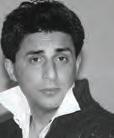
The whole ‘six degrees of separation’ model may hold true for the world, but, not for us desis
‘‘ ‘‘
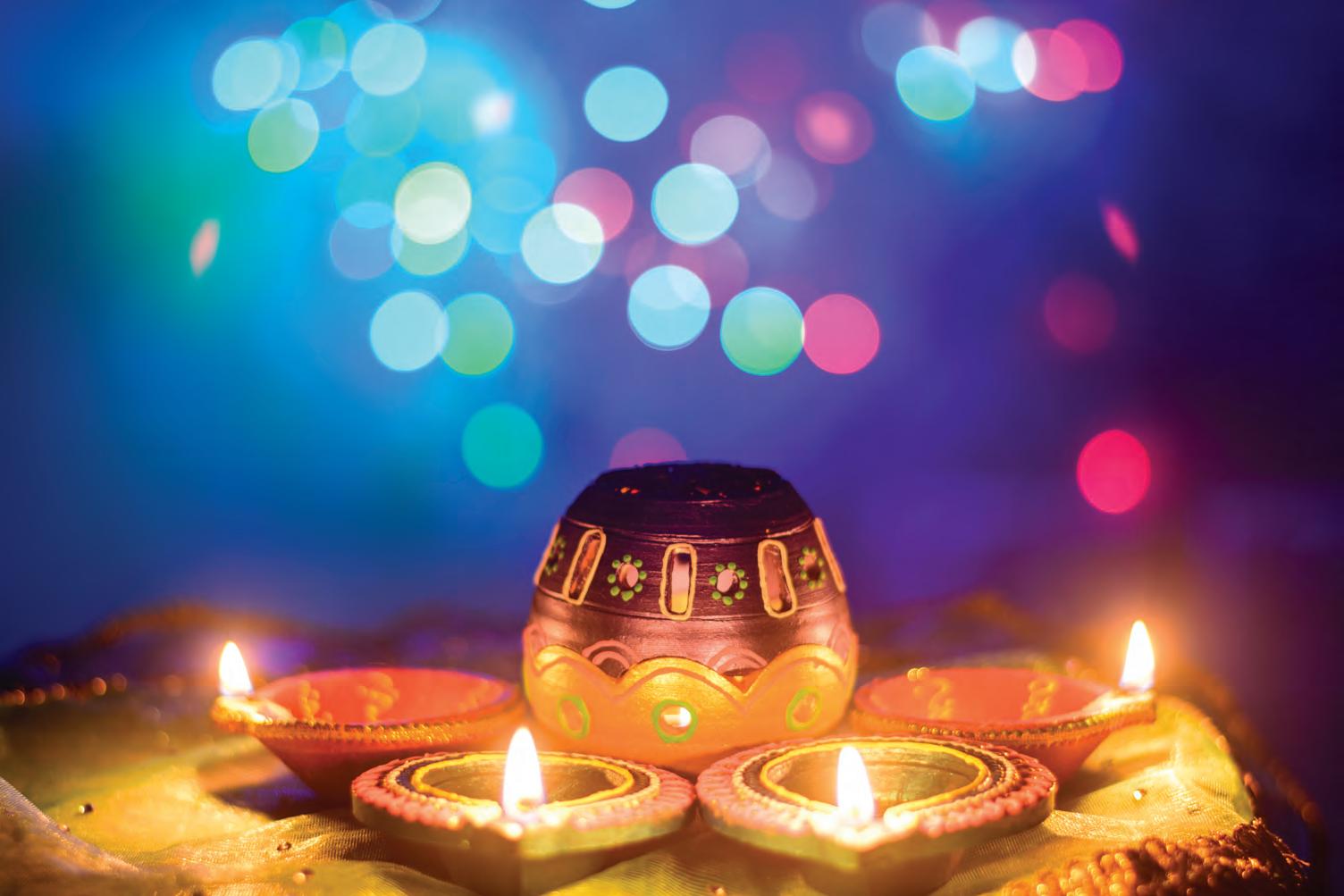


By replacing and upgrading parts of the existing phone and internet network, nbn is bringing more Australians access to fast and reliable broadband services.*
As most existing landline phone and internet services will be disconnected, it’s important you switch affected services before your disconnection date.^ nbn will notify you by mail once you can switch to a new plan over the nbn™ access network. You’ll then have up to 18 months before existing services are disconnected.^




















This means nbn does not sell to the public. nbn supplies phone and internet providers with wholesale services they combine with their own network services to deliver your new plan. So you’ll need to contact your preferred provider once you’re ready to switch.
You have a choice of speeds nbn offers three superfast wholesale speed tiers to providers ‑ 25Mbps, 50Mbps and 100Mbps.* There’s also 12Mbps, which is not considered superfast broadband.* Talk to your phone and internet provider about speed tiers available in your area, as well as the actual speeds you can expect to experience on your new plan (particularly during peak times like the evening).
Factors affecting your experience
The nbn™ access network and your provider’s network are likely to slow down when more people are online at once. Maximum speeds will also vary based on your modem, Wi Fi
and other issues.*For more information on how your particular experience will be affected, speak to your provider.
Important information on device compatibility
Safety critical devices like medical alarms, fire alarms, monitored security alarms and lift emergency phones, may not be compatible with your new plan at all times.† To help minimise a loss in your services, check with your device provider that these will work on your new plan or whether you’ll need to find an alternative solution. It’s also important you register safety critical devices with nbn by calling 1800 227 300 or visiting nbn.com.au/compatibility.


*Your experience, including the speeds actually achieved over the nbn™ broadband access network, depends on the technology over which services are delivered to your premises and some factors outside our control (like your equipment quality, software, signal quality, broadband plan and how your service provider designs its network). nbn is a provider of wholesale speeds to internet providers. nbn™ wholesale speed tiers available to your phone and internet provider vary depending on the access technology in your area. ^ Services offered to phone and internet providers over the nbn™ broadband access network will be replacing phone and internet services provided over most of the existing landline networks, including copper and the majority of HFC networks within the fixed line footprint. Services provided over existing fibre networks (including in‑building, health and education networks) and some special and business services may not be affected. To find out if your services will be affected, please contact your current phone or internet provider. For more information, visit nbn.com.au/ switchoff or call 1800 687 626.† The rollout of the nbn™ broadband access network will involve new technologies, and some existing devices (including many medical alarms, autodiallers and emergency call buttons) may not be compatible with these at all times. You should contact your device provider to find out if your alarm or other device will work when connected to the nbn™ broadband access network and what alternative solutions are available. For more information, visit nbn.com.au/compatibility.


• Results: Our students are 4x more likely to score Band 6

• Teachers: HSC top performers and qualified professionals
• Resources: Written by leading textbook authors and HSC markers
Years 7-12. Enrol now for Term 4, 2017.